The most incredible ancient discoveries made recently
The ancient world uncovered
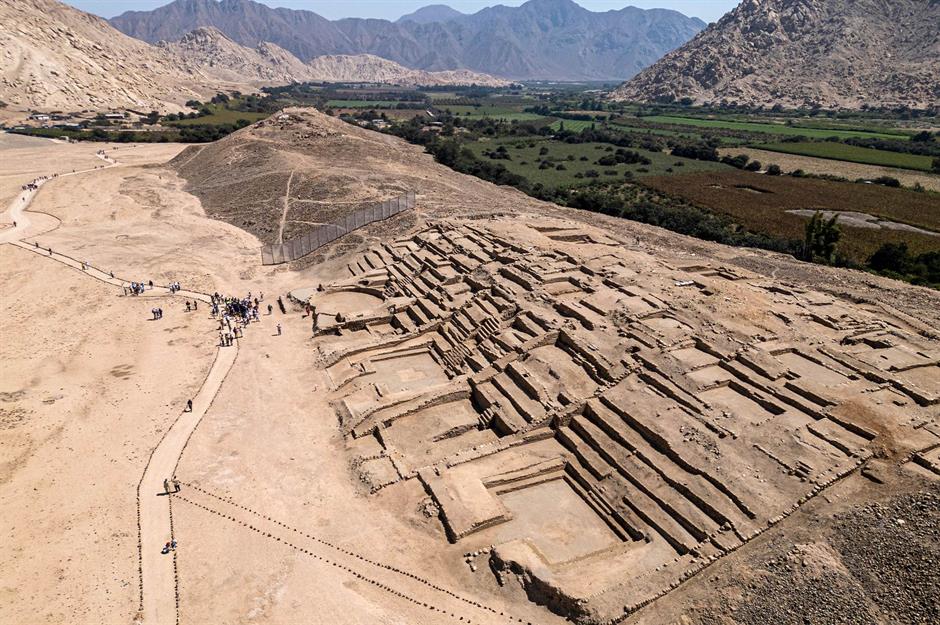
You might think, given the intervening millennia, that we would already have found most of the world's ancient treasures, but new artefacts and monuments are still being unearthed every year. From Iron Age hoards and rare biblical inscriptions to lost desert cities and even the skeletons of huge sea dragons, the past few years have shed dazzling new light on the distant past.
Read on to see incredible recent archaeological discoveries that have changed the way we look at our ancient ancestors...
Roman coin hoard, Wales, UK
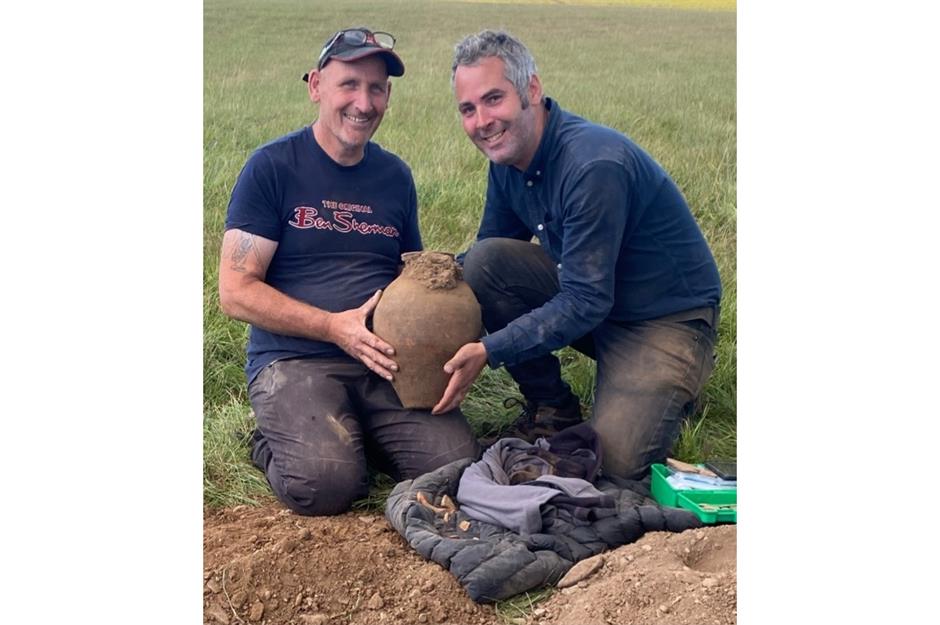
In October 2025, metal detectorist David Moss and his friend Ian Nicholson discovered two clay pots in north Wales thought to contain up to 15,000 Roman coins. Fearing they could be stolen Moss slept with the hoard in his car for three days before taking it to experts.
The coins are now at the National Museum Cardiff where they will be analysed. The largest hoard the museum is aware of to date contained 10,000 coins, so this find could turn out to be the biggest hoard ever discovered in Wales.
The ancient city of Peñico, Peru

In July 2025, the 3,800-year-old city of Peñico was unveiled by the Peruvian archaeologist Dr Ruth Shady. Situated in the Supe Valley, the site contains 18 structures including ceremonial temples and residential compounds that were once home to members of the ancient Caral civilisation, who inhabited Peru long before the Aztecs, Maya or Inca.
Shady’s investigations into the Caral, which began in 1994, have revealed them to be one of the ancient world’s most peaceful societies. No defensive walls or weapons have been discovered and it seems their society was built on trade, music, ritual and consensus.
'Missing pharaoh', Valley of the Kings, Egypt
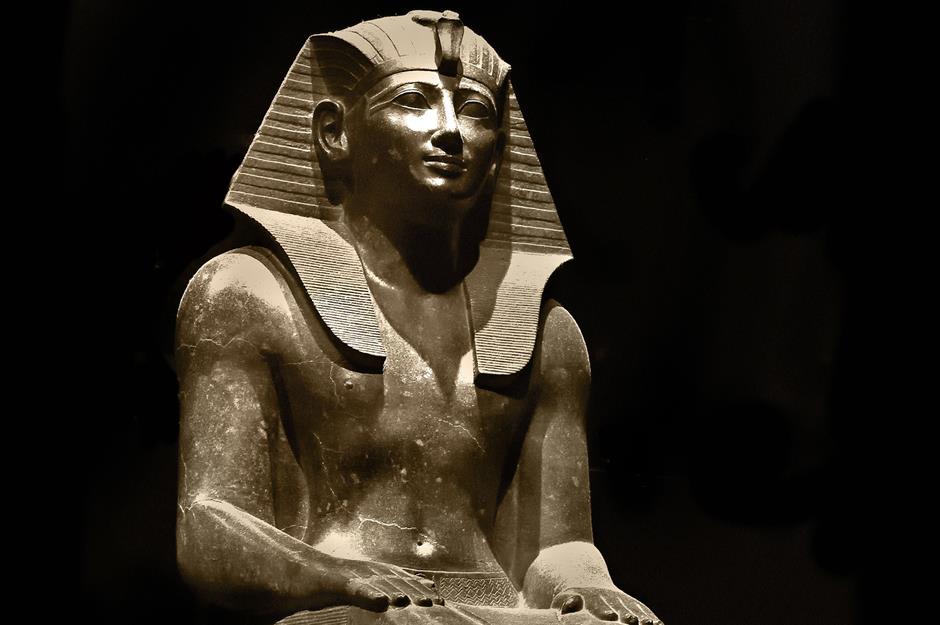
In February 2025, a joint British/Egyptian team discovered a rock-hewn tomb in the western wadis near the Valley of the Kings that was immediately hailed as the most significant discovery since Tutankhamun in 1922.
It belonged to Thutmose II, known as the ‘missing pharaoh’, who ruled Egypt from 1493 to 1479 BC. It was empty, with indications that Thutmose II and his treasures were moved just six years after the burial when the tomb flooded. But the team are hoping to find a second, intact tomb soon.
UK's biggest ever dinosaur footprint site, England, UK
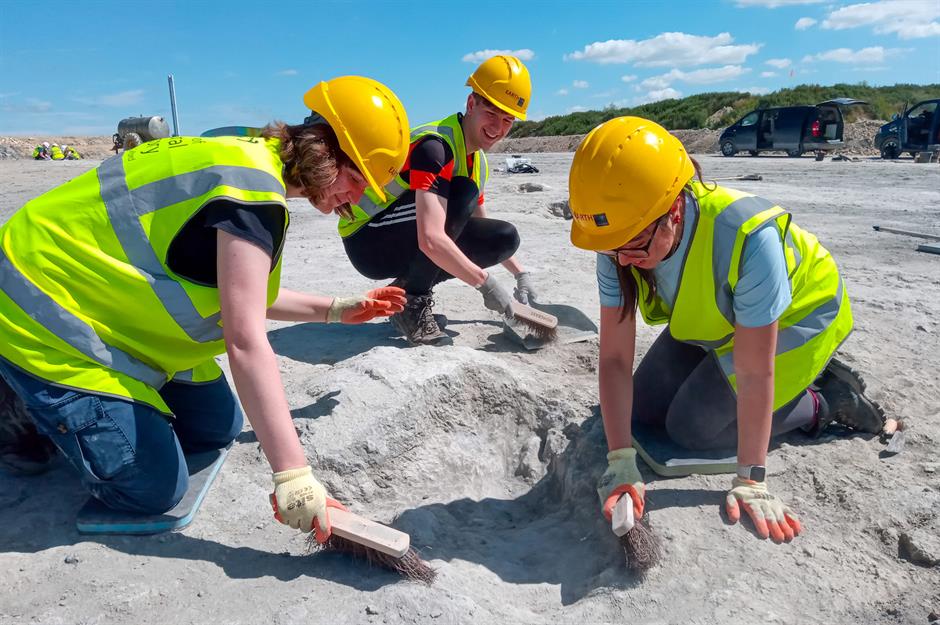
At the start of 2025, it was reported that the UK's biggest ever dinosaur trackway site had been discovered in a quarry in Oxfordshire. Consisting of roughly 200 huge footprints, which were made 166 million years ago, the site shows the movements of a long-necked sauropod called Cetiosaurus and a smaller meat-eating Megalosaurus.
The tracks were first spotted in 2024 by a worker operating a digger at Dewars Farm Quarry. A team of over 100 scientists, students and volunteers took part in the excavation, which features on a new series of the BBC's Digging for Britain.
Roman villa complex, England, UK
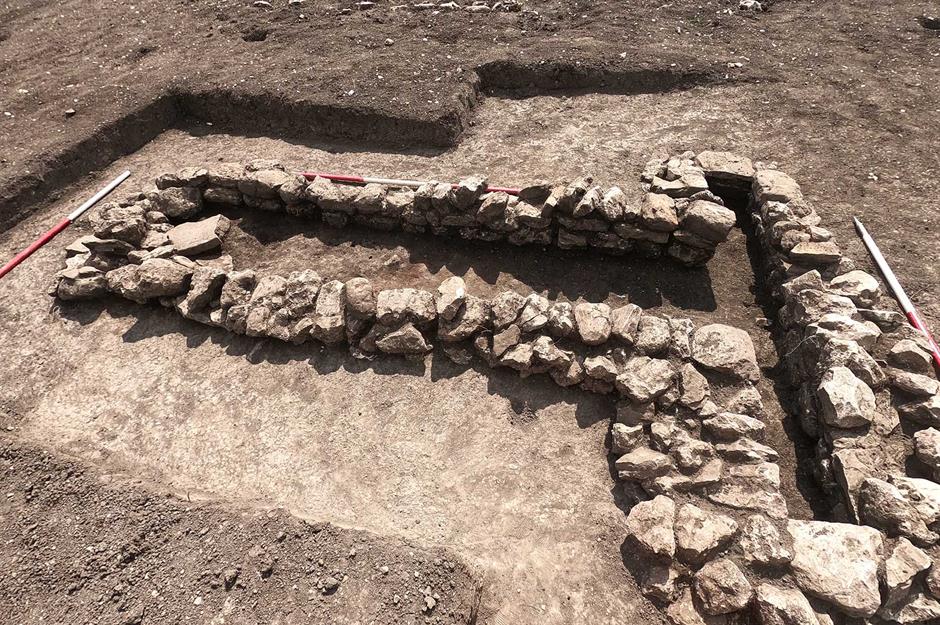
In March 2024, archaeologists from the Red River Archaeology Group uncovered a remarkable Roman villa complex while working on a housing development in the English county of Oxfordshire. The buildings were once vibrantly decorated with mosaics and painted plaster, while uncovered artefacts include miniature votive axes, a horse-head buckle and jewellery.
The team also found evidence of a hypocaust – an ancient system of underfloor heating – as well as T-shaped ovens (pictured) used for drying cereal and hops.
New frescoes, Pompeii, Italy

Among the most intensively excavated archaeological sites in the world, the ancient Roman city of Pompeii – preserved under a layer of volcanic ash following the eruption of Mount Vesuvius in AD 79 – turns up dazzling new discoveries almost every year. In 2024, this astonishing archaeological conveyor belt served up a splendid banqueting room, decorated with frescoes depicting mythological characters and figures from the Trojan War.
Various heroes adorn the walls of the elegant entertaining space, including Helen, Paris and Cassandra, daughter of Priam. The walls were painted black to stop smoke from the oil lamps leaving a mark.
Burned Neolithic porridge, Germany
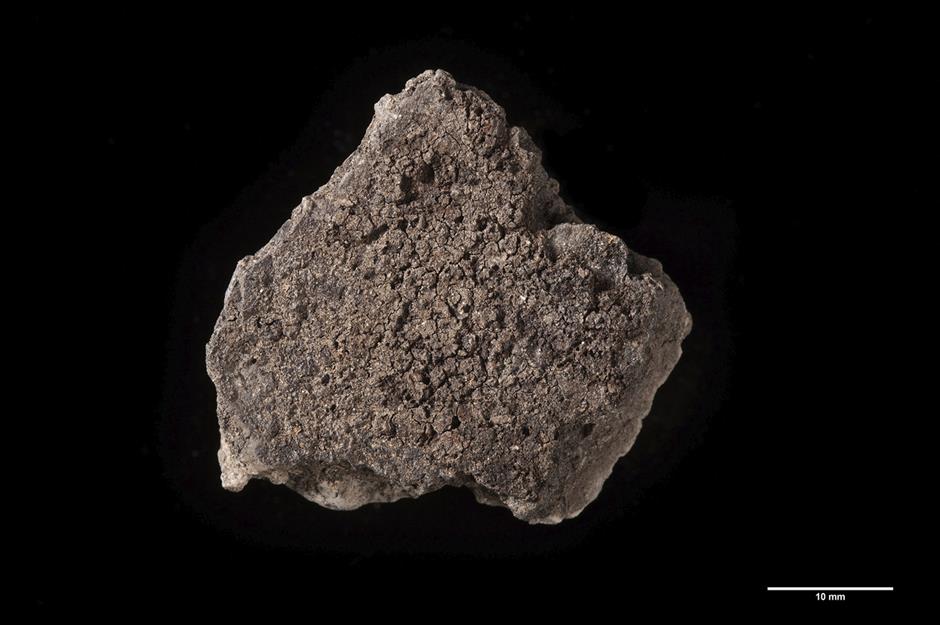
If you've ever burned your porridge on a sleepy Monday morning, don't worry – you're slotting into a 5,000-year-old tradition. The remains of a charred cooking pot uncovered in Germany in January 2024 revealed what might be the world's first recorded attempt at cooking the breakfast staple – and it didn't go well.
The shards were found in a rubbish heap at the Neolithic settlement Oldenburg LA 7, thought to be one of the oldest villages in Germany, and residues showed a failed effort to cook mixed cereal grains with seeds in water – a rare insight into the diets and routines of our Stone Age forebears.
Roman funerary bed, London, England, UK
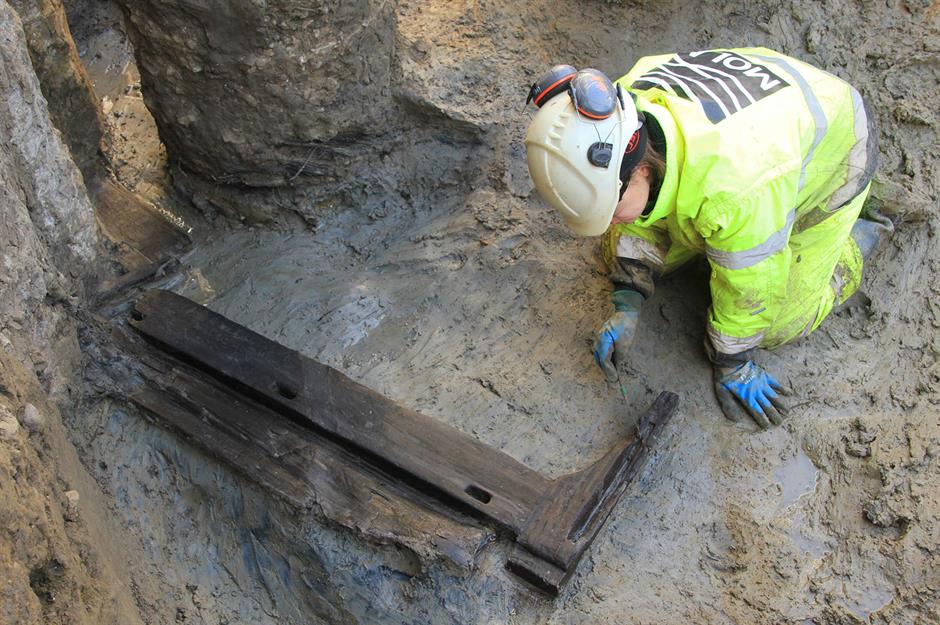
Excavations in central London in early 2024 uncovered five extremely rare Roman oak-wood coffins and what might be the first complete Roman funerary bed ever found in Britain. Twenty feet (6m) below London's streets and preserved by the damp mud of the River Fleet, the almost-2,000-year-old bed matches depictions of funerary beds found in Roman art, with carved feet and joints fixed with wooden pegs.
As for the coffins, only three well-preserved Roman-era timber coffins have been unearthed before.
Roman mausoleum, London, England, UK
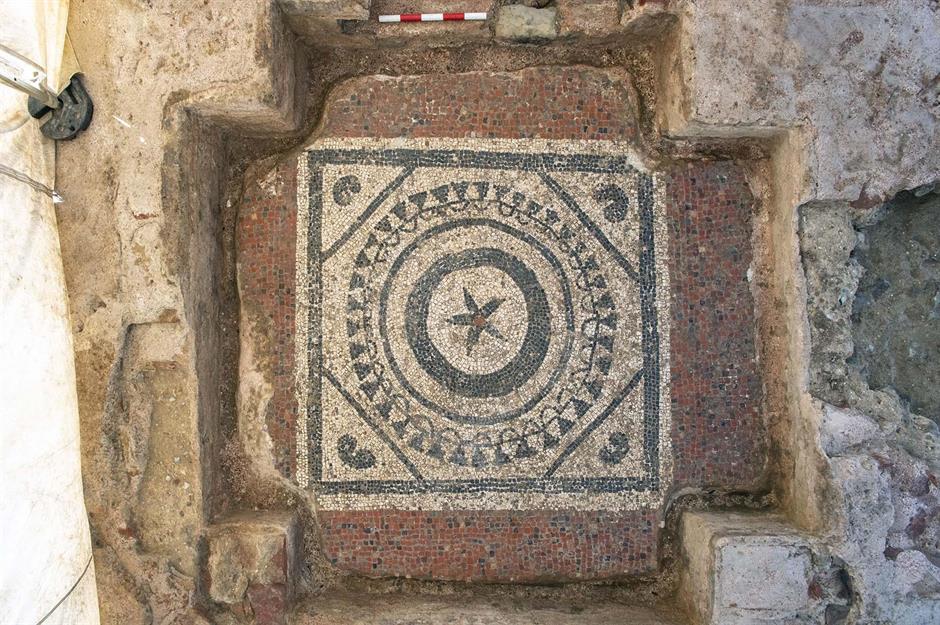
An ancient Roman mausoleum described by experts as "completely unique" was unearthed in central London in June 2023, just a stone's throw from the city's biggest skyscraper, the Shard. Hot on the heels of another set of elaborate mosaics found at the site in 2022, the discovery included walls, interior flooring and a beautiful central mosaic featuring a flower surrounded by concentric circles and red tiles – a typically Roman design.
Excavators called it "the most intact Roman mausoleum ever to be discovered in Britain".
Sculpture of K'awiil, Mexico
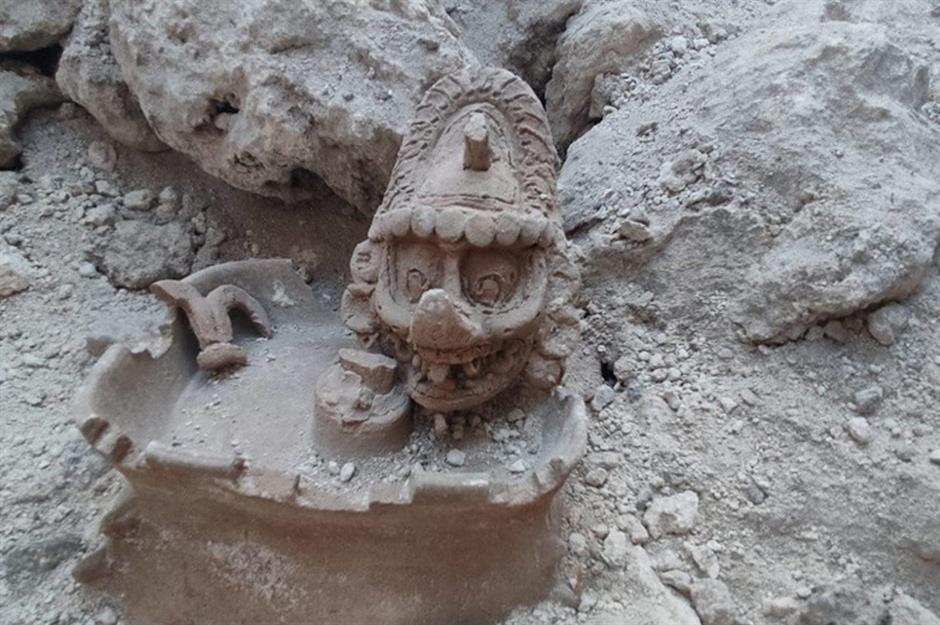
The Maya Train Project is a high-speed rail network that connects archaeological sites along Mexico's Yucatan Peninsula. During its construction, a huge haul of artefacts were unearthed along the line.
This extraordinary sculpture of K'awiil, the Maya god of lightning, power, fertility and strength, was uncovered in May 2023. Archaeologists were thrilled with the figure, which would once have adorned the lid of a stone urn, as it's only the fourth three-dimensional depiction of K'awiil ever discovered. It's also the first found outside the ancient Maya capital of Tikal in modern-day Guatemala.
Tartessos faces, Merida, Spain
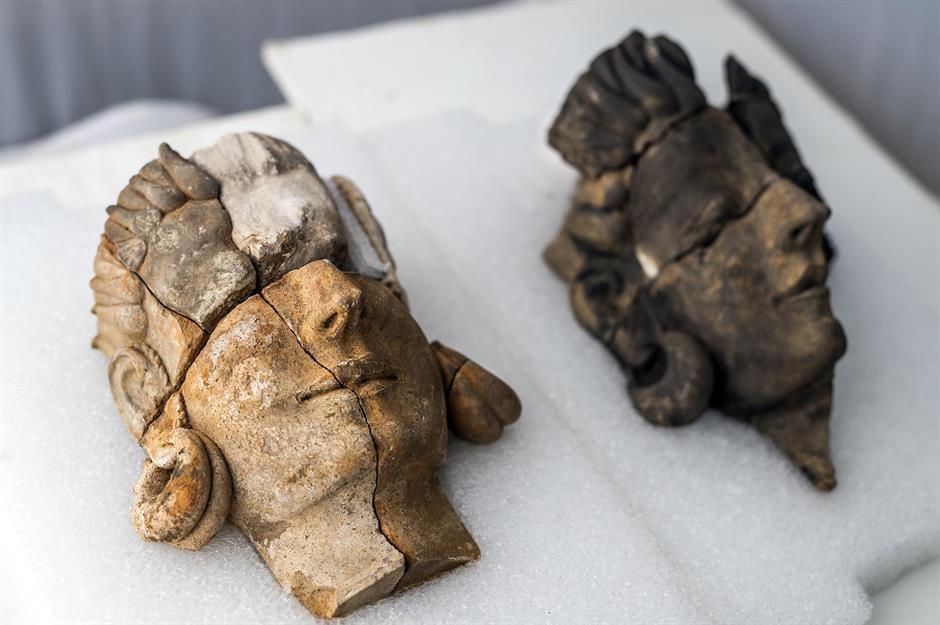
Five life-sized busts discovered near Merida in Spain in May 2023 are thought to be the only known depictions of the Tartessos people – an ancient civilisation that vanished more than 2,500 years ago. The faces were found in a sealed pit mixed with sacrificial animal bones near the ancient Tartessian temple of Casas del Turunuelo, and date from the 5th century BC (near the end of the Tartessian era).
Two of the reliefs are almost complete and probably represent female deities – significant as the Tartessians were thought to portray gods as animals and plants. Based in southern Spain, the Tartessos people were once linked by Greek philosopher Aristotle with the mythical lost city of Atlantis.
Golden glass fragment, Rome, Italy
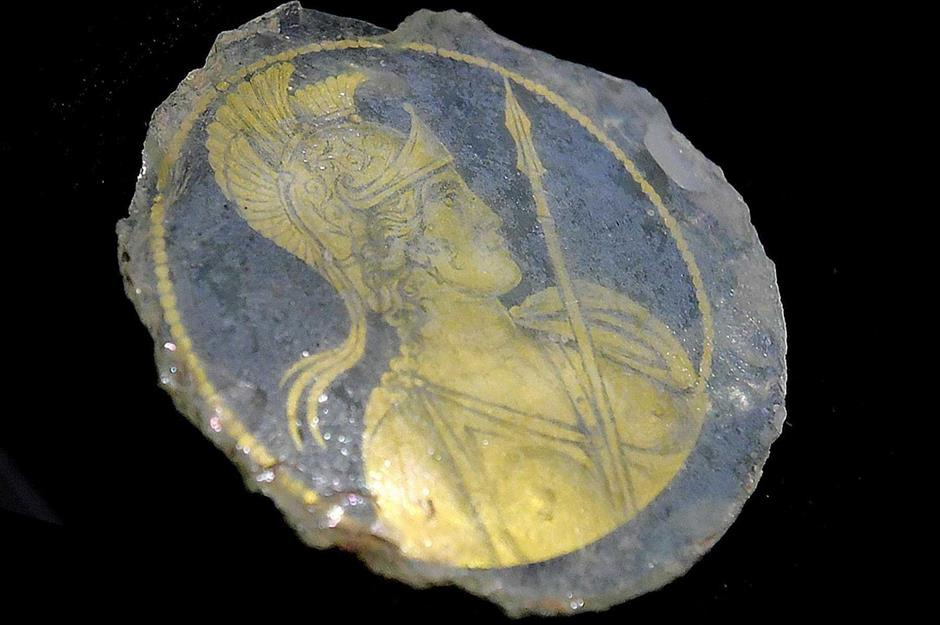
During construction of the new Porta Metronia metro station in Rome, workers discovered this unique golden glass fragment. Dating back to the 4th century AD, the rare find depicts Roma (the goddess who personified ancient Rome), and may have once formed the bottom of a drinking glass.
It’s the first artefact of its kind ever found, with the use of gold leaf suggesting it was a luxury item. The new metro station is due to be inaugurated on 8 December, and will house a small museum displaying the fragment alongside other artefacts found nearby.
Ancient mummified crocodiles, Egypt
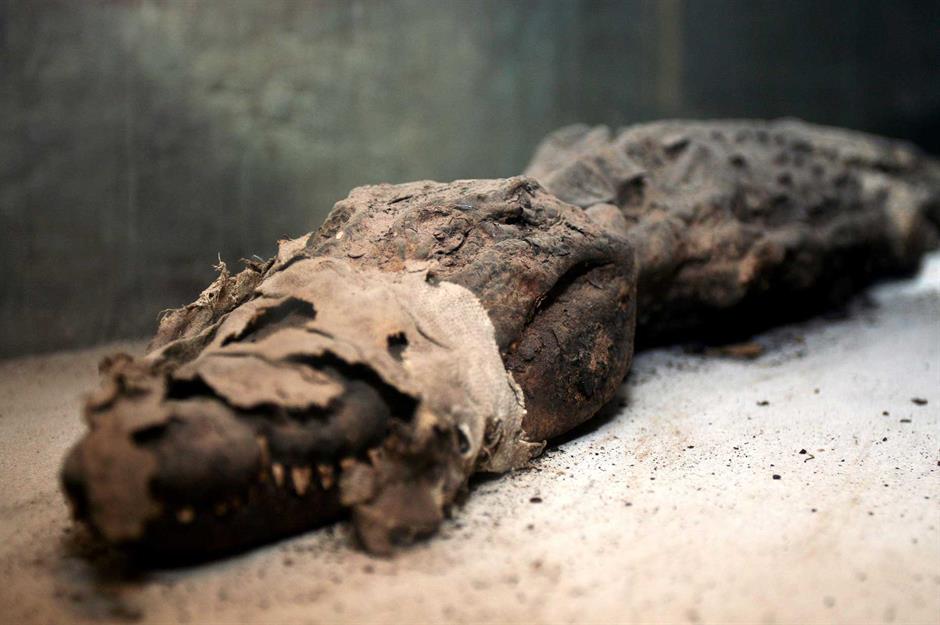
In 2019, archaeologists digging at the Qubbat al-Hawa burial site in southern Egypt unearthed 10 mummified crocodiles. A 2023 study then finally confirmed that these ancient reptiles date back over 2,300 years to the pre-Ptolemaic era (in other words, before 304 BC).
Very unusually they were found in a well-preserved condition, with their sizes ranging from six to 11 feet (1.8-3.5m) long. Pictured here is another mummified crocodile previously found in Egypt.
World's oldest runestone, Norway
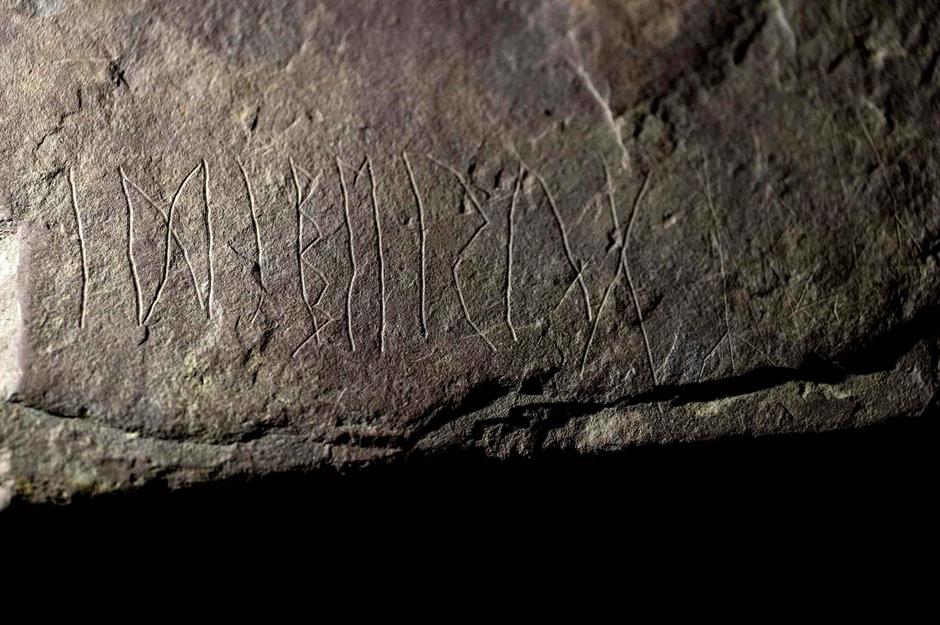
While excavating an ancient grave near Tyrifjord, west of Oslo, archaeologists in Norway discovered a 2,000-year-old runestone – now thought to be the world's oldest. Some of the runes – an ancient language used in northern Europe until the adoption of the Latin alphabet – may spell out a person's name.
The inscription was found in January 2023, and was described by Oslo's Museum of Cultural History as 'among the oldest runic inscriptions ever found'. New research in 2025 has found that the runestone was part of a much larger slab, which scientists are working to piece together from other fragments.
Assorted ancient relics, Spain
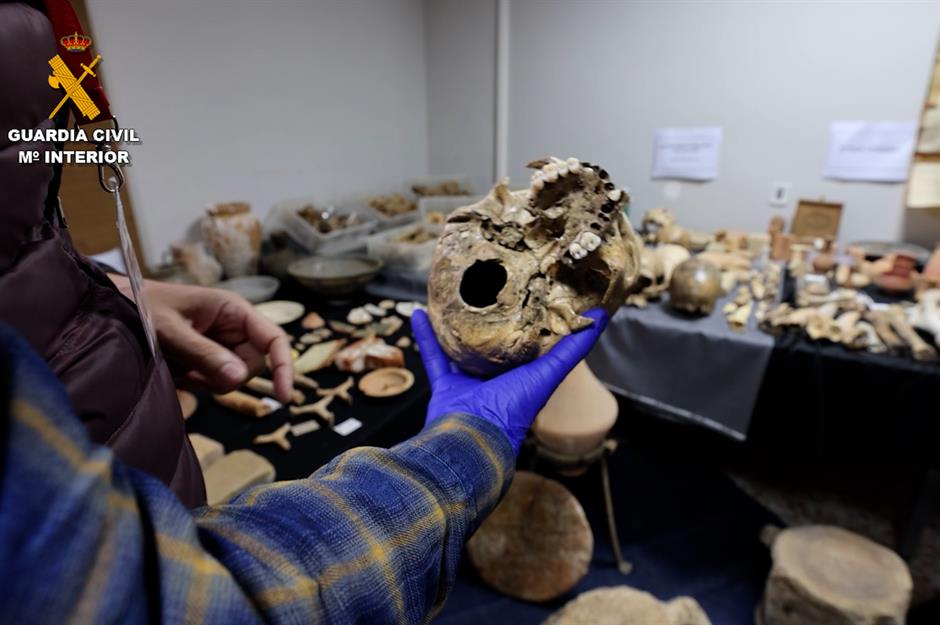
At the end of 2022, after receiving a tip-off concerning skeletal remains, Spanish police raided two homes in the Alicante province. What they found was astonishing: a (probably illegal) treasure trove of 350 ancient artefacts, ranging from 5,000-year-old bone fragments to Phoenician pottery.
They went to a local archaeological museum while an investigation was carried out. One of the suspects claimed the items were inherited from a deceased relative, who kept journals that pinpoint where the items were dug up. These notes could lead to the discovery of as-yet-unknown ancient sites in Alicante.
Crocodile heads, Egypt
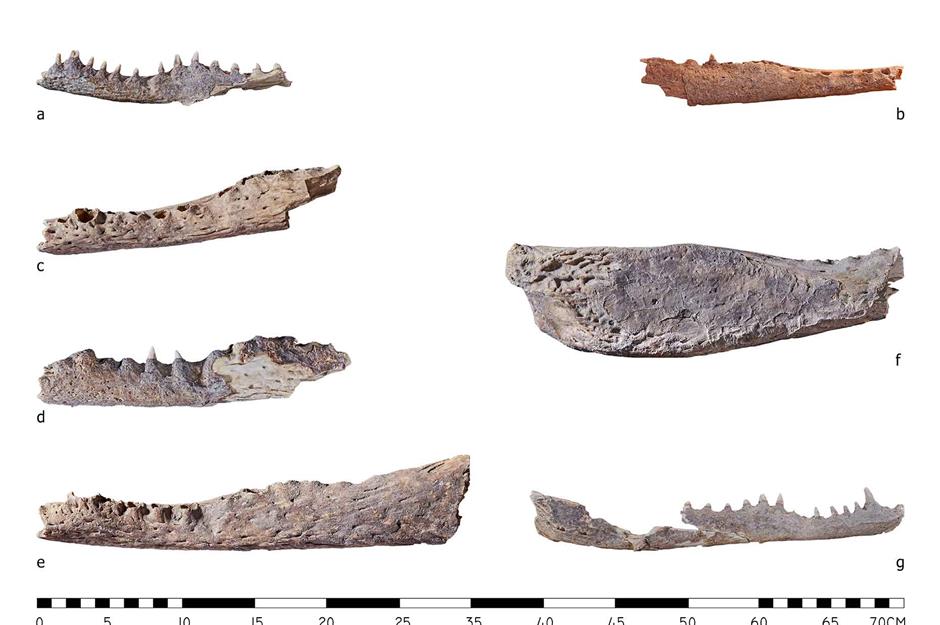
In late-2022, archaeologists studying two tombs in the el-Asasif necropolis in Luxor (dating roughly to 1550-525 BC) discovered nine crocodile heads wrapped in fabric, although they were not mummified nor given any other treatment for preservation. As a result, only skull and jawbone fragments have survived, which scientists have confirmed belong to a species native to freshwater habitats in Africa.
Ancient Egyptians worshipped crocodiles in the form of the god Sobek, who was associated with pharaonic power, military prowess and fertility.
Prehistoric jawbone, Spain
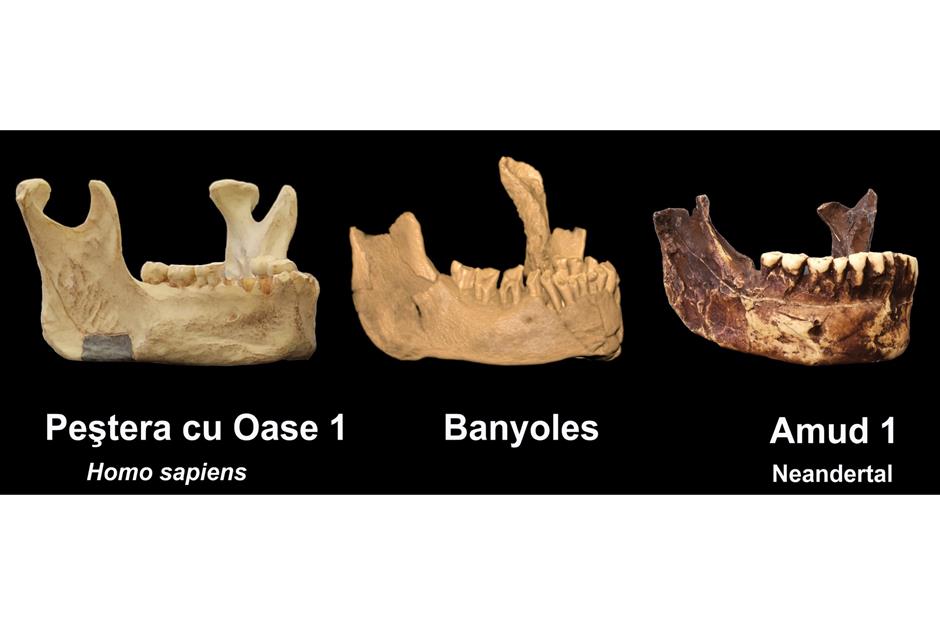
In 1887, one of the earliest human fossils ever found was unearthed in a quarry near the Spanish town of Banyoles and was quickly categorised as the jawbone of a Neanderthal (or Neandertal) – an extinct human subspecies that died out 40,000 years ago. In 2022, groundbreaking new analysis by researchers at Binghamton University in New York suggested that the frequently-studied bone might instead mark the oldest known presence of Homo sapiens in Europe.
The team found it 'shared no distinct Neanderthal traits', and could place modern humans in Europe up to 65,000 years ago. One mystery remains, as the bone lacks one crucial Homo sapiens trait: a chin.
Medieval necklace, England, UK
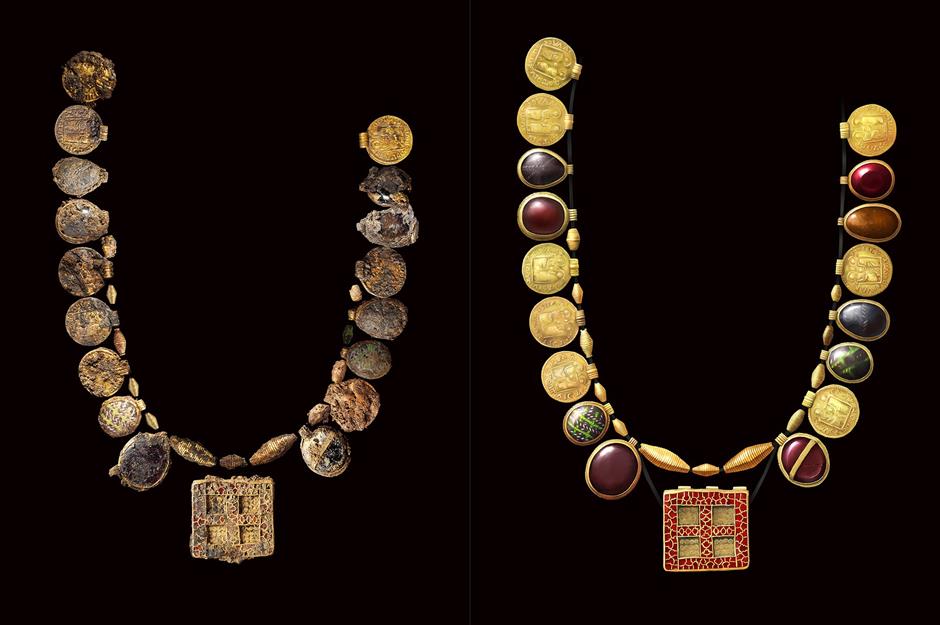
In 2022, archaeologists in the UK uncovered a 'once-in-a-lifetime' find – a grand medieval necklace adorned with Roman coins, gold, garnets and semi-precious stones, with an intricate rectangular cross as its centrepiece. A burial item, likely draped around the neck of a devout, high-status woman (an abbess perhaps, or a minor royal), the ornament was plucked from the ground in the village of Harpole ahead of a proposed housing development, where it had lain for more than 1,350 years.
Already nicknamed 'the Harpole Treasure', the necklace is much more extravagant than any other find of its kind, better-made and better-preserved than the Saxon necklaces found in the British Museum.
Roman barn conversion, England, UK
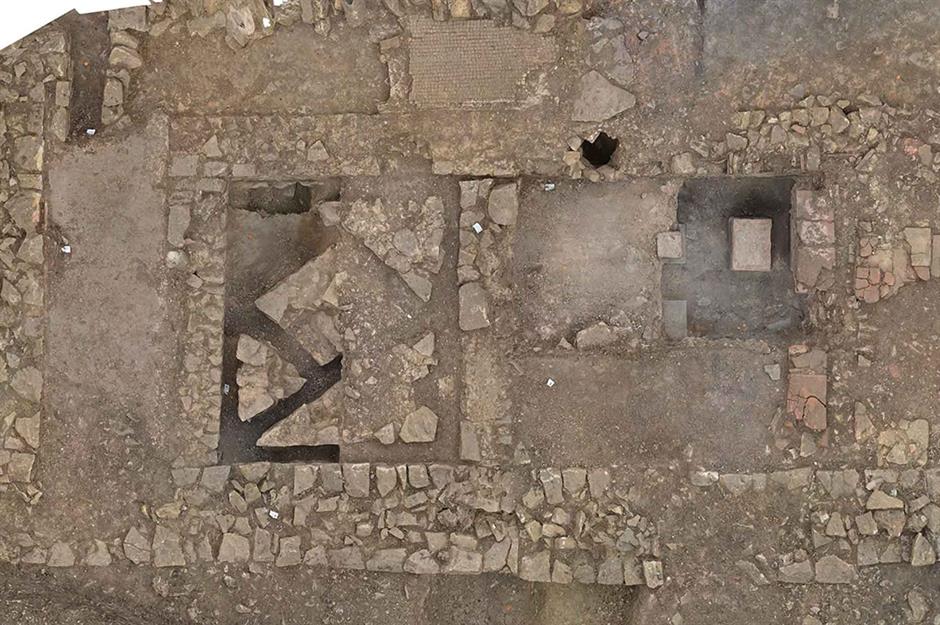
When a grand Roman villa complex was unearthed in the English country of Rutland in 2021, archaeologists revealed a rare mosaic depicting a scene from Homer's epic, The Iliad. And in 2022, further excavations uncovered one of Britain's earliest barn conversions.
Experts believe the timber-built barn was converted to stone in the 3rd or 4th century AD to provide space for a Roman bathing suite (pictured), complete with a hot steam room, a warm room, a cold plunge pool and underfloor heating. The other end was likely retained for agricultural or craft work.
Sponsian coin, Transylvania, Romania
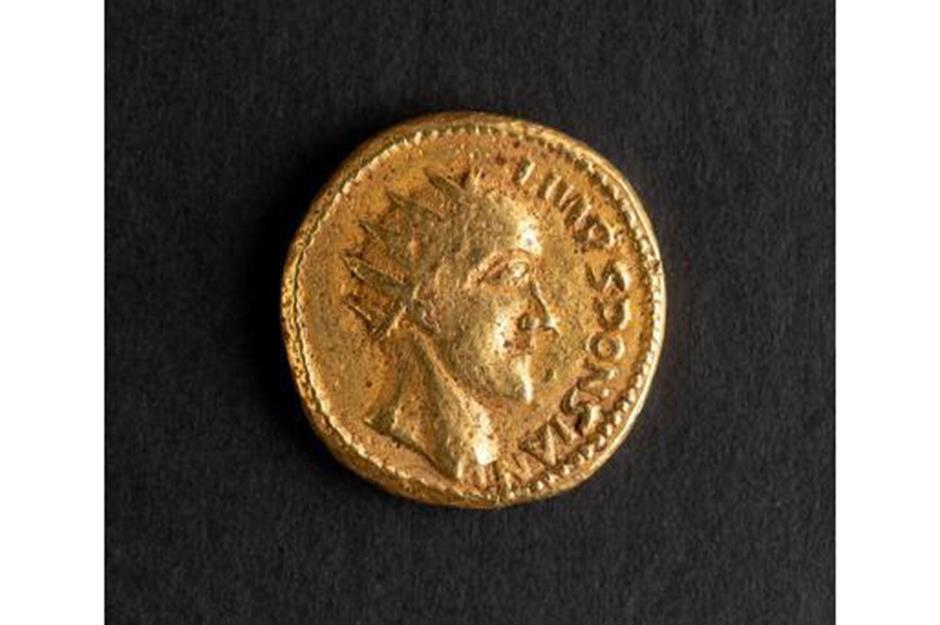
History doesn't change very often (because, well, it's already happened) but a 4th-century Roman coin recently rewrote a brief period in Europe's past. Discovered in Romania 300 years ago, the coin was always considered a fake as it dated from the reign of Emperor Sponsian – an emperor long dismissed by historians as a fictional character.
However, after new analysis in November 2022, scientists say scratch marks on the coin prove its validity, and therefore that of the emperor that adorns it. Experts must now reckon with a brand-new Roman emperor, though there is no suggestion he ever ruled centrally from Rome.
Hand of Irulegi, Navarre, Spain
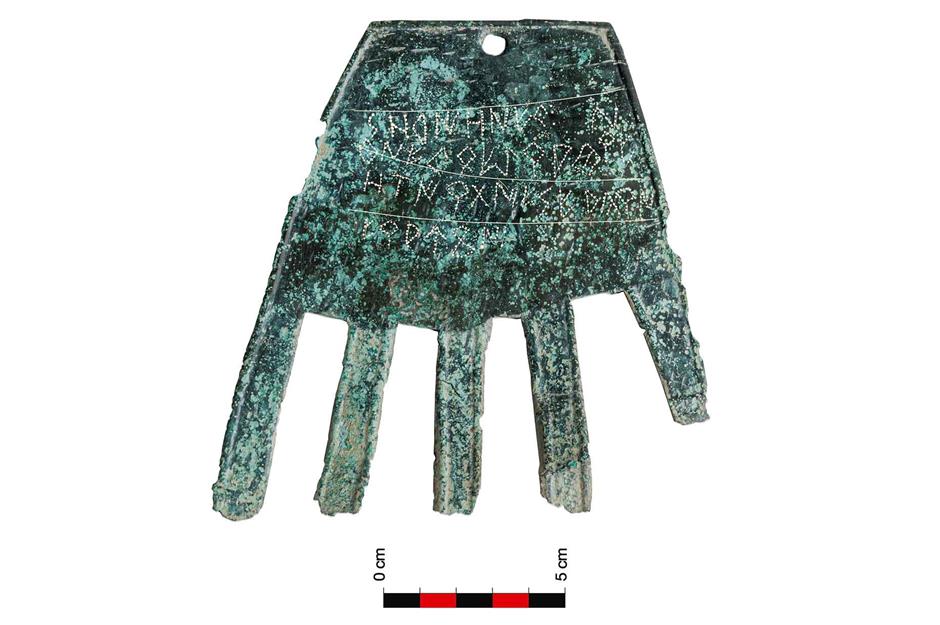
In 2021, archaeologists unearthed this 2,100-year-old bronze relic in Navarre, northern Spain. The Hand of Irulegi once belonged to the Vascones, a late-Iron Age tribe, and was most likely hung over a door for good luck.
During its restoration in 2022, a four-line inscription was found etched into the hand, and the words are now believed to be the earliest ever written in the Basque language. Before the discovery, it was thought the Vascones were mostly illiterate.
Ancient bronze statues, Tuscany, Italy
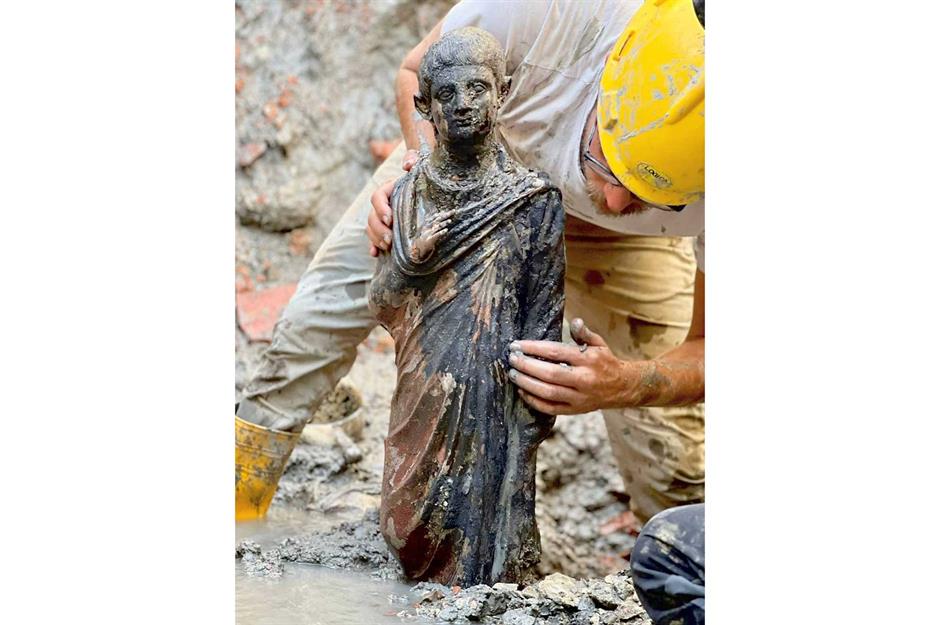
A hoard of 24 Etruscan and Roman bronze statues was unearthed in late-2022 by archaeologists digging in an ancient religious sanctuary near the village of San Casciano dei Bagni. Dated between the 2nd century BC and the 1st century AD, they depict gods and replicas of human organs, which had been tossed into the thermal waters by devotees hoping to be healed.
According to a local professor, this significant find will 'rewrite history', as it provides evidence that the relationship between Etruscans and Romans was closer than previously thought – the two peoples even prayed to deities together.
Assyrian reliefs, Nineveh, Iraq
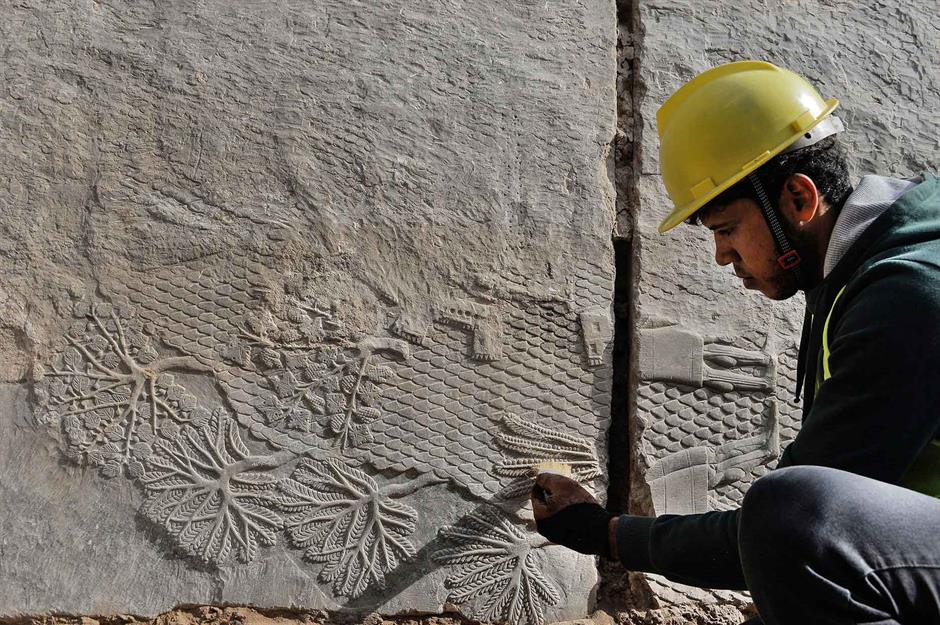
In October 2022, archaeologists unearthed Assyrian marble reliefs dating back 2,700 years in Mosul, northern Iraq. The team were rebuilding the Mashki Gate (Gate of God), which was originally built around 700 BC, but which was destroyed by Islamic State militants in 2016 after being reconstructed in the 1970s.
The astonishingly rare find included seven slabs of marble decorated with ornate carvings of palm trees, pomegranates and Assyrian soldiers firing arrows, and was part of a previously hidden room in King Sennacherib's palace. Buried for millennia, their beautiful preservation means archaeologists can now dig deeper into the Neo-Assyrian Empire's history.
Megalithic dolmen, Cork, Ireland
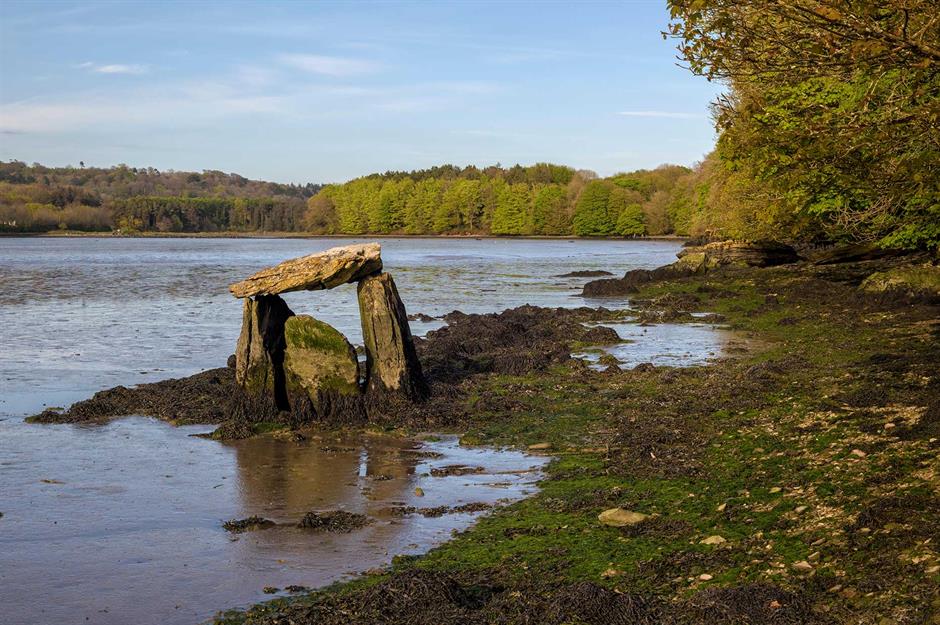
In 2022, a partially submerged structure thought to be an 18th-century 'folly' (decorative building) was identified instead as an ancient megalithic dolmen. Located in Cork Harbour, on the former estate of Rostellan Castle, the Carraig a Mhaistin stone was previously believed to be an ornamental monument built in the medieval style.
But local archaeologist Michael Gibbons now believes he has 'conclusive evidence' that it's a prehistoric structure, with more likely concealed beneath the surface.
Trojan War mosaic, Rastan, Syria
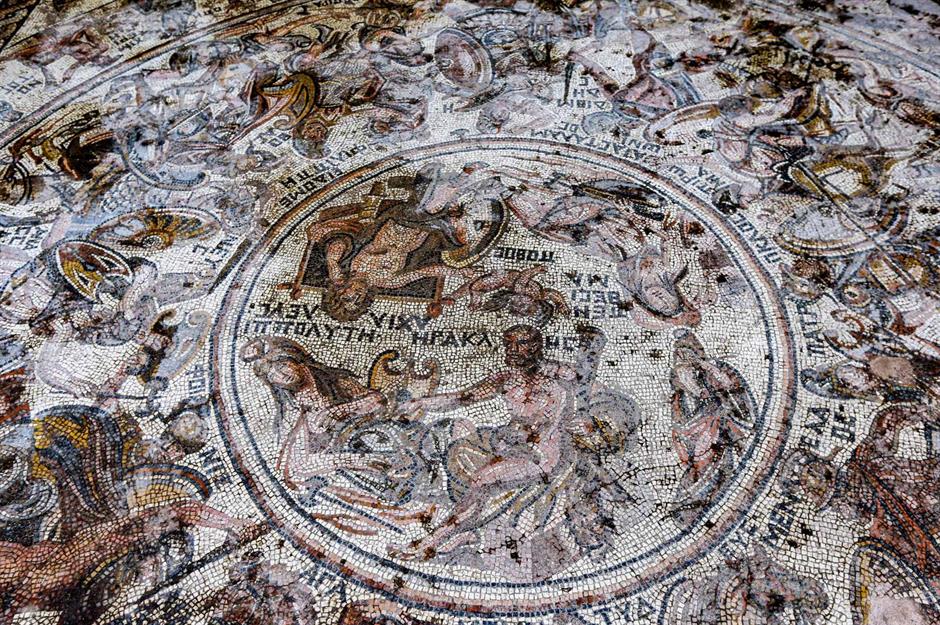
In October 2022, archaeologists found this 1,600-year-old mosaic in Rastan in northern Syria. Thought to be the floor of an ancient bathhouse, the unusually intact 1,300-square-foot (120sqm) art piece depicts the Trojan War, a semi-mythical conflict from more than 2,000 years ago between the ancient Greeks and the walled city of Troy.
Constructed in the Roman era, the mosaic shows soldiers with swords and shields alongside mythical Amazons said to have fought alongside the Trojans.
Thalassotitan fossil, Casablanca, Morocco
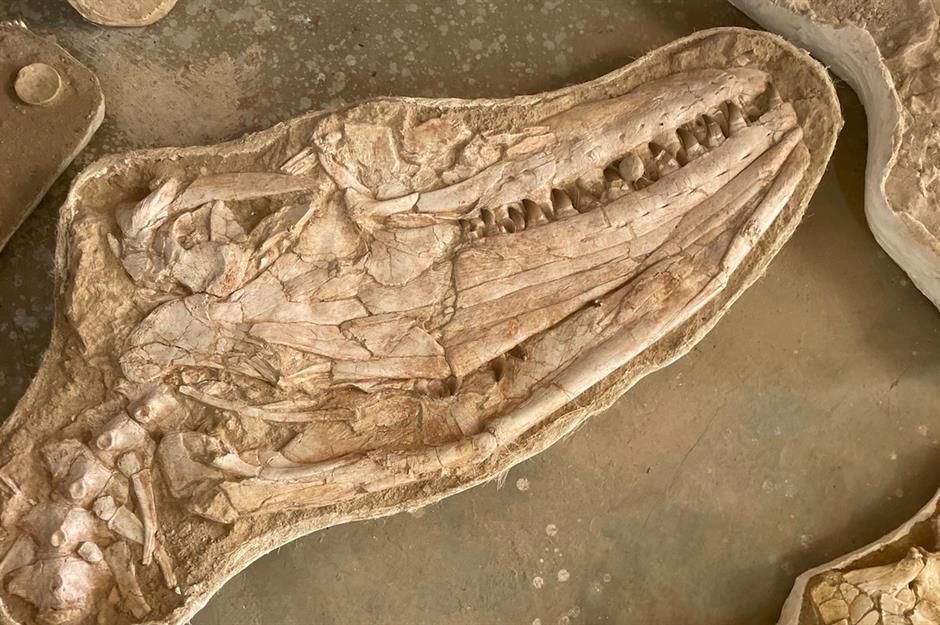
Scientists in Morocco discovered a terrifying fossil in August 2022, giving a rare insight into the creatures that once swam in our oceans. A cross between a Komodo dragon, great white shark, killer whale and T-rex, the fossil was named Thalassotitan atrox, which means 'dreadful titan of the sea'.
The ancient sea creature lived around 66 million years ago and measured 30 feet (9m) in length. The team from the University of Bristol, who found the fossil, believe that the creature spat out its prey’s bones, some of which they might still find nearby.
Dinosaur footprints, Texas, USA
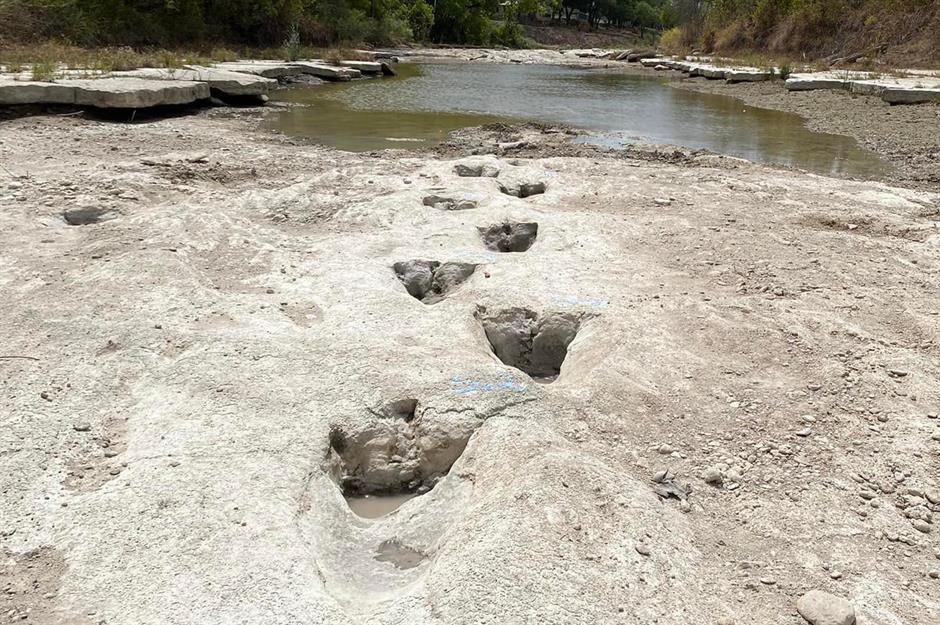
Following severe drought in Texas in August 2022, huge dinosaur tracks were discovered in a dried up muddy riverbed at Dinosaur Valley State Park. Said to belong to an Acrocanthosaurus, a 15-foot-tall (5m), seven-tonne cousin of the T-rex, the tracks are around 113 million years old.
Another species, the Sauroposeidon, measuring 60 feet tall (18m) and weighing a whopping 44 tonnes, also probably made some of the prints. Although the park is famed for its dinosaur tracks, this is the first time these particular footprints have ever been seen.
Medieval water tunnel, Winchester, England, UK
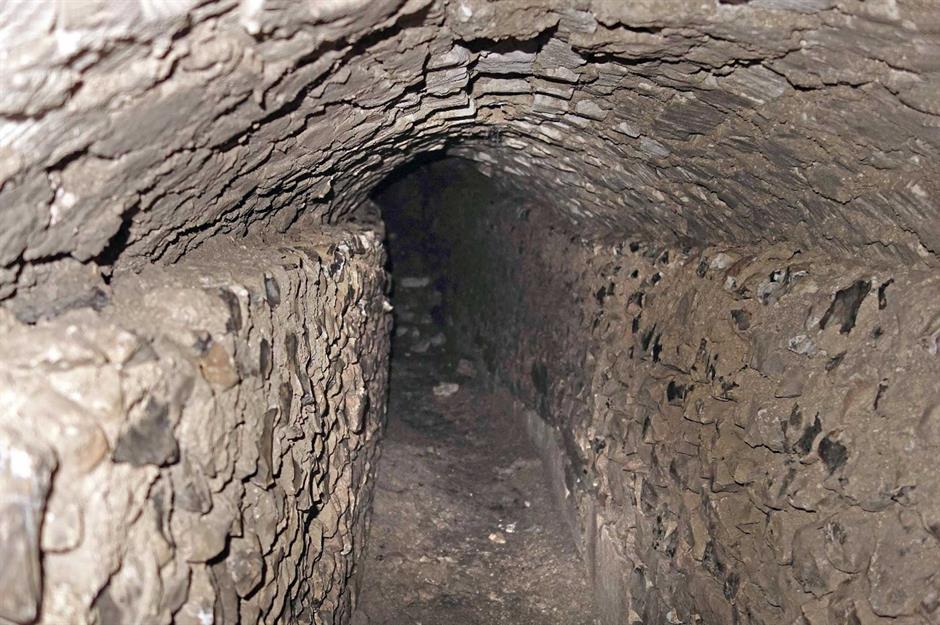
In August 2022, archaeologists and volunteers from the Hyde900 charity unearthed a medieval water tunnel dating back to the 9th-century reign of King Alfred the Great. Near Hyde Abbey, Alfred's final resting place, the 'extraordinary discovery' likely supplied water to the refectory, kitchens and infirmary of the abbey, plus the latrines of the monks' dormitories.
As well as locating the vaulted channel, the team identified Roman pottery shards, medieval tiles, window glass and bones.
Skeleton at Herculaneum, Italy
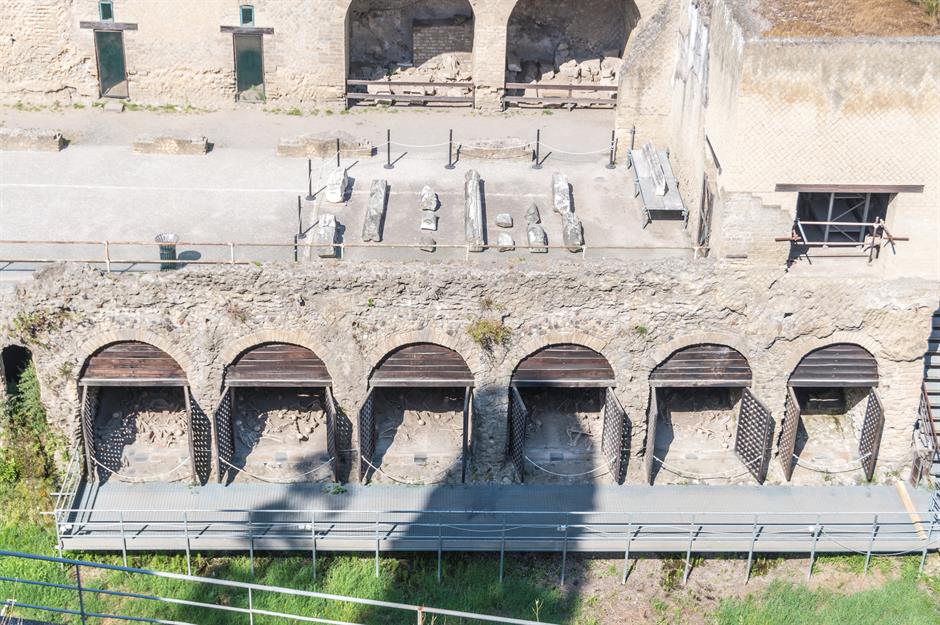
Fascinating discoveries were made at the ancient Roman town of Herculaneum, near Pompeii, in October 2021, during the first archaeological dig on the site in almost three decades. The remains of a man were found just yards from what would have been the ancient town’s beach (pictured).
The mud-encased skeleton was surrounded by carbonised wood, including a roof beam that may well have collapsed on him as he tried to escape the catastrophic eruption of Mount Vesuvius in AD 79.
Rock-cut necropolis, Turkey
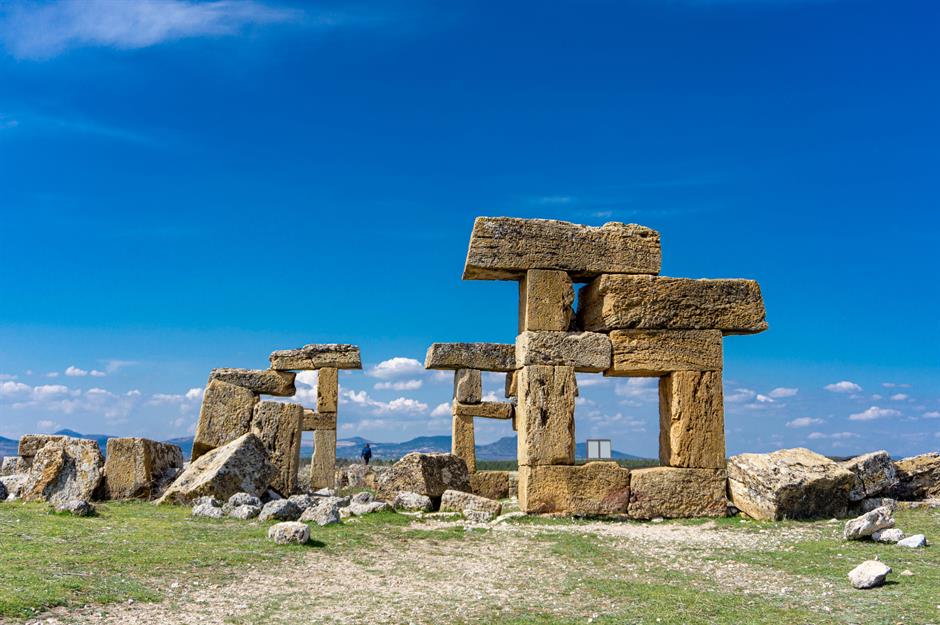
An extensive network of extraordinary rock-cut chamber tombs was uncovered in October 2021 by archaeologists working at the ancient city of Blaundos in Turkey. The team found 400 tombs that had been cut into the steep side of a canyon around 1,800 years ago.
Many of them have multiple remains and feature intricate wall paintings detailing vines, flowers, mythological figures and geometric patterns, as well as pottery and artefacts. Founded at the time of Alexander the Great, the ancient centre of Blaundos later became an important Roman city in Asia Minor.
Ancient faeces, Austria
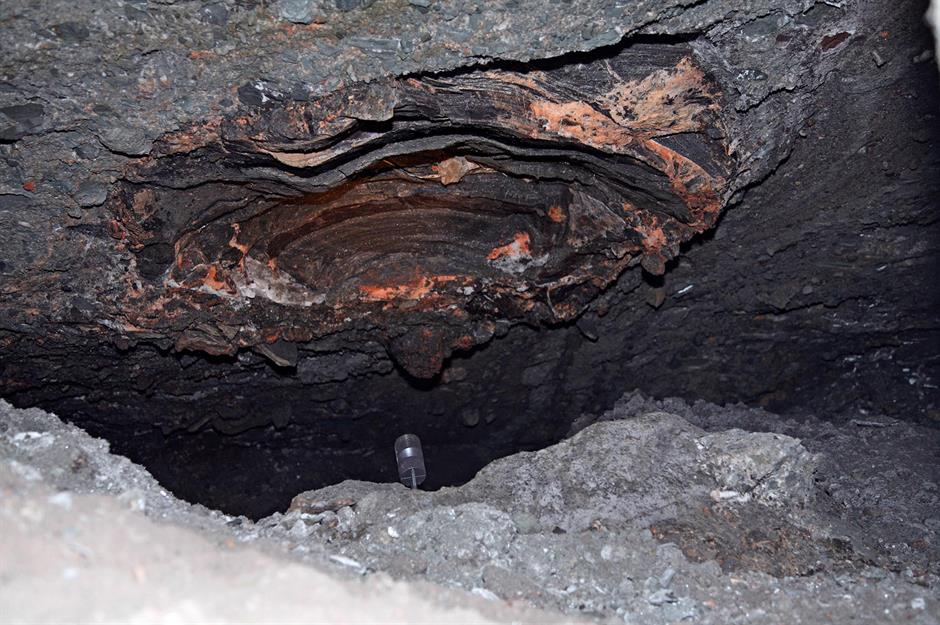
In October 2021, paleofaeces discovered in the Hallstatt salt mine (pictured) in the Austrian Alps revealed surprising things about the diets and food habits of ancient people. The fossil samples were analysed by experts and found to contain two fungi associated with fermentation techniques, showing that blue cheese and beer were both made and enjoyed in Europe during the Iron Age.
The ancient excrements were left behind by prehistoric miners at the mine, now part of a UNESCO World Heritage Site, which has been used for salt production for more than 3,000 years.
Hittite mosaics, Turkey
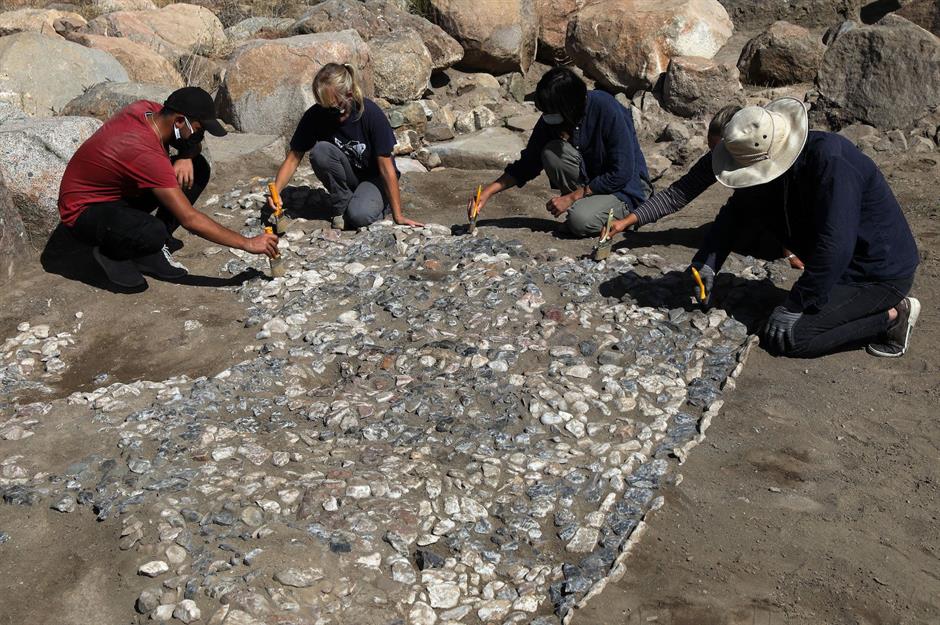
In September 2021, Turkish archaeologists uncovered 3,500-year-old paving stones that have been described as the 'ancestors' of later Mediterranean mosaics. The stones were found in the remnants of a 15th-century-BC temple dedicated to Teshub, a storm deity worshipped by the ancient Hittites.
Thousands of small natural-coloured stones in shades of beige, red and black were revealed using shovels and brushes, arranged in simple geometric patterns of triangles and curves. The extraordinary find predates the oldest known Greek mosaics by 700 years and gives us rare insight into the Hittites, a little-understood Bronze Age Anatolian civilisation.
Oldest human footprints in North America, New Mexico, USA
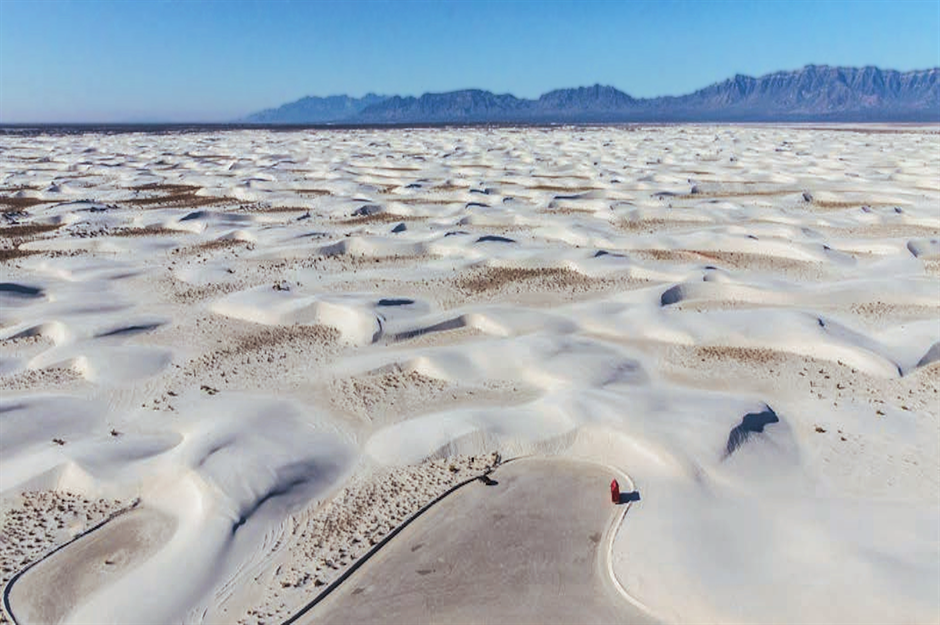
The discovery of fossilised footprints in the White Sands National Park in New Mexico suggests that humans roamed North America between 21,000 and 23,000 years ago. The research, reported in the journal Science in September 2021, found that the prints are the oldest impressions ever discovered on the continent.
They were found buried in layers of sediment across the ancient Lake Otero and belonged mostly to children and teenagers. It was previously thought that humans arrived in North America between 13,500 and 16,000 years ago.
Iron Age golden treasure, Denmark
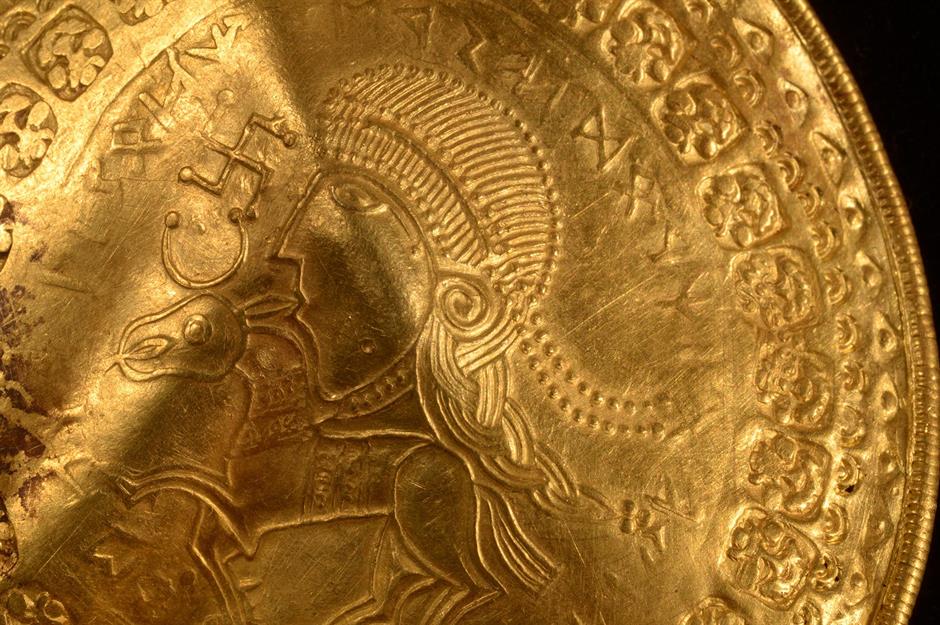
In an extraordinary case of beginner’s luck, first-time detectorist Ole Ginnerup Schytz discovered a hoard of golden Iron Age treasure just hours after he started scanning a field in Vindelev, near Jelling, in September 2021. The hoard, which contained huge gold medallions, coins and jewellery, has been dated back to the mid-6th century and was likely buried by an Iron Age chieftain under a longhouse.
Now known as the Vindelev Hoard, the Vejle Museum in Jutland, which worked on the excavation, described it as 'one of the largest, richest and most beautiful gold treasures in Danish history so far'.
Boundary stone, Rome, Italy
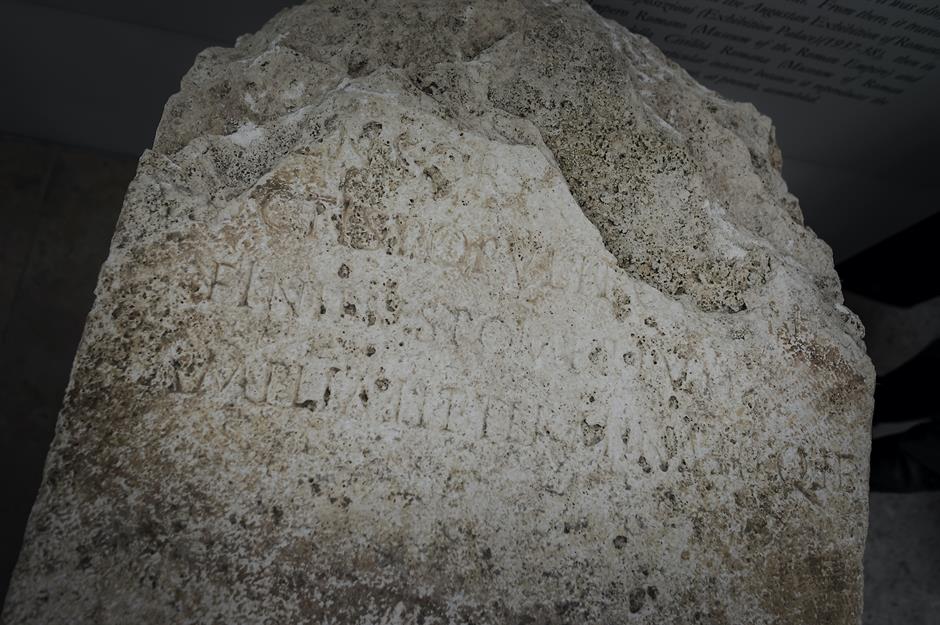
A rare find was uncovered during excavations ahead of the redevelopment of a piazza in Rome in August 2021 – a large marble boundary stone, known as a 'pomerium cippus', which marked the sacred limits of the Roman Empire's capital. The inscription places it in AD 49 during the reign of Emperor Claudius, who enlarged the sacred part of the city of Rome.
It would have been laid to mark the new boundary between the historic city and its conquered territory. It's the first discovery of its kind in more than 100 years.
Canaanite comb, Lachish, Israel
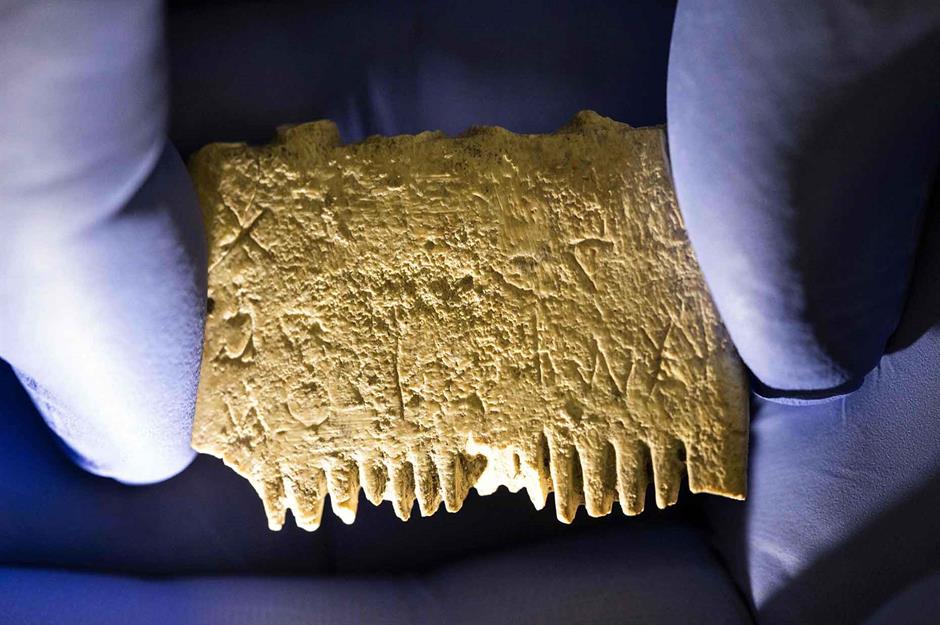
The oldest known sentence written in the earliest alphabet has been discovered – on a head-lice comb. While the 1.4 inches-long (3.5cm) tool was discovered in 2017, its engravings were only spotted in 2021, and the text reads 'May this tusk root out the lice of the hair and beard'.
The find was excavated in Lachish, an ancient Canaanite city state, and possibly dates to 1700 BC. Archaeologists say this was a luxury item as most equivalent combs were made simply from wood or bone.
Bronze Age burial mound, Ukraine
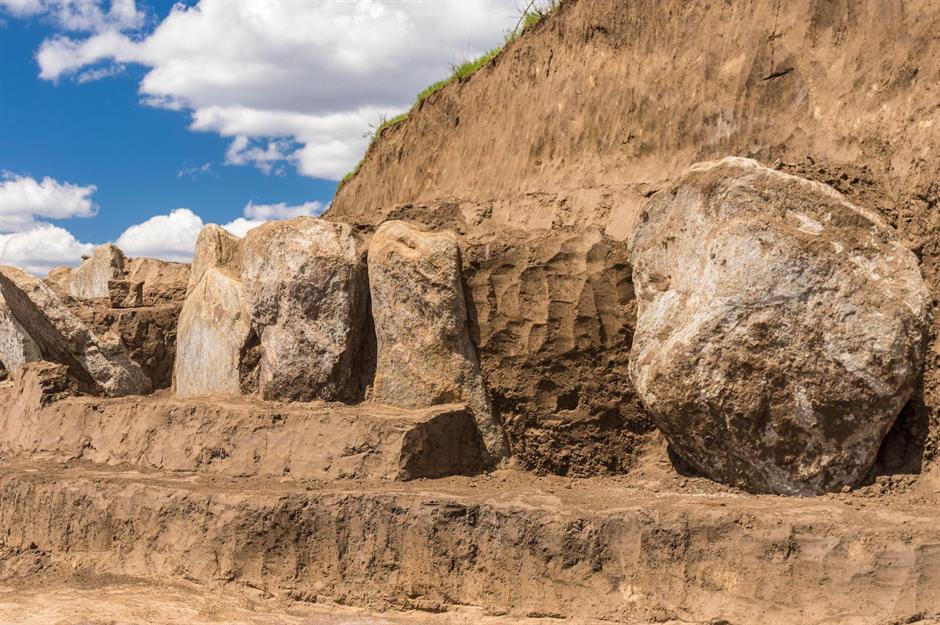
Excavations of a kurgan (burial mound) in eastern Ukraine revealed multi-layered graves from the early Bronze Age, the Scythian era and the Middle Ages. The macabre discovery was made during road works in the village of Novooleksandrivka in July 2021. A stone structure, known as a cromlech, was found in the inner part of the ancient mound, created by tall vertical blocks placed in a circle.
The mound, thought to be 5,300 to 5,500 years old, contained 27 skeletons. One corpse showed traces of mummification while others were accompanied by artefacts such as wolf-fang necklaces and flint tools. Unfortunately, since the Russian invasion in 2022, the burial mounds have suffered from shelling and other military activity, and it is unknown if these particular mounds have been damaged.
Bronze oil lamp, Israel
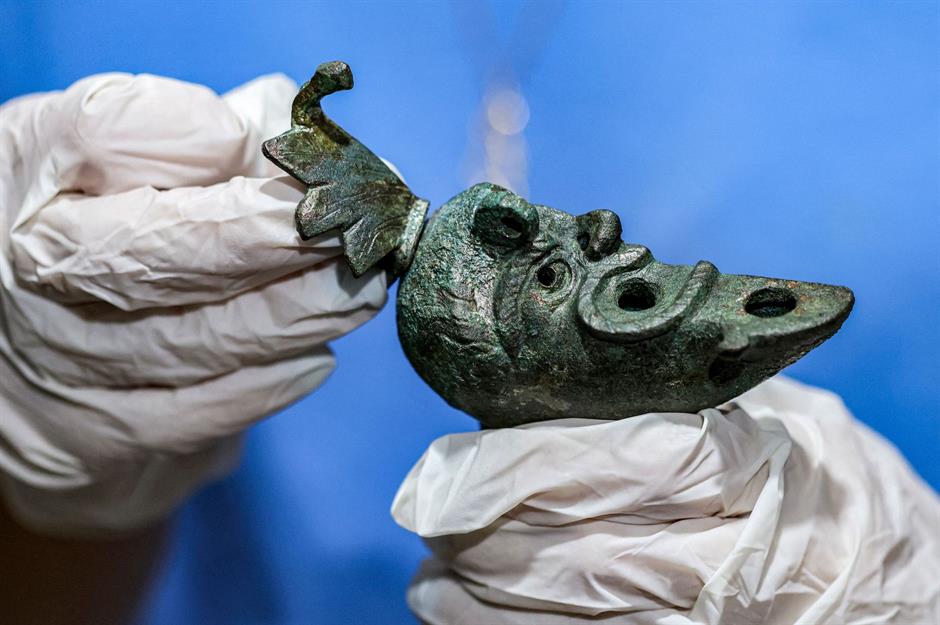
In May 2021, a rare and bizarre-looking bronze oil lamp was discovered by Israeli archaeologists in the foundation of a building erected in Jerusalem’s City of David almost 2,000 years ago. The Israel Antiquities Authority said it believed the lamp, which is shaped like half a head of a bearded man, was deposited as an offering to bring good fortune to the building’s residents.
It’s estimated to be from the late 1st century or early 2nd century. The lamp’s unusually well-preserved wick was also discovered at the site.
Rare inscription from the biblical period, Israel

Also in Israel, a biblical-era inscription written in ink on a pottery vessel in Canaanite alphabetic script was found in a storage pit at the Khirbet er-Ra'I archaeological site in July 2021. Bearing the name of the biblical judge Jerubbaal, it dates from around 1,100 BC and is the first time his name has been found on an archaeological artefact.
The fragment is from a small jug that most likely carried precious liquids like scented oil. Inscriptions from the biblical period are extremely rare.
City wall of Jerusalem, Israel
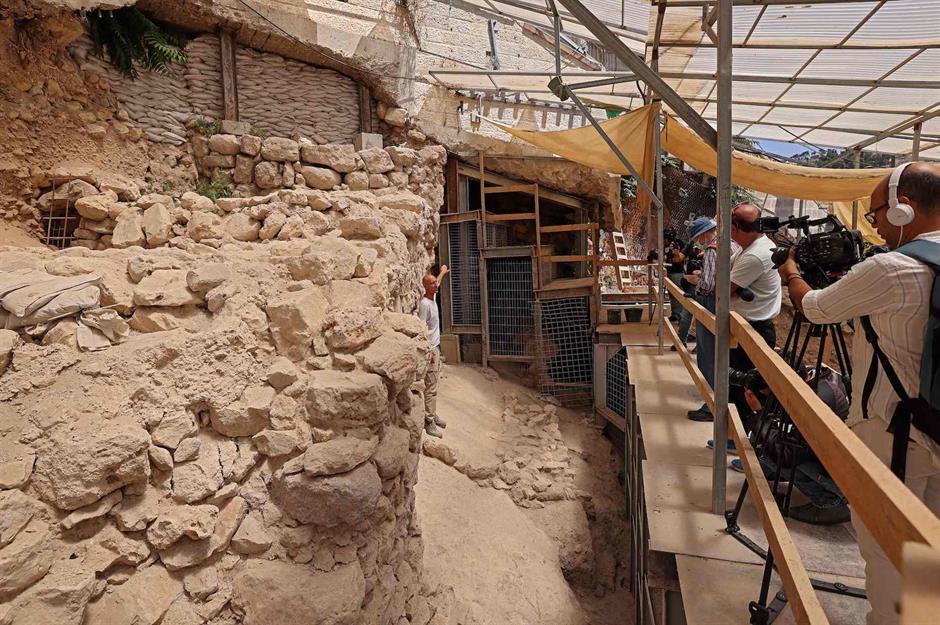
In July 2021, Israel Antiquities Authority archaeologists working at the City of David National Park in the Old City of Jerusalem discovered what they believe is a missing section of Jerusalem’s outer city wall, part of the Iron Age fortifications that were built at least 2,700 years ago. Most of the wall was destroyed during a Babylonian invasion in 586 BC, which saw Nebuchadnezzar II plunder the city.
The discovery supports the idea that a huge wall once protected the entire eastern flank of the city before the conquest. Archaeologists also found a Babylonian stamp seal, a bulla bearing a name in ancient Hebrew script, and various vessels.
Neanderthal carving, Germany
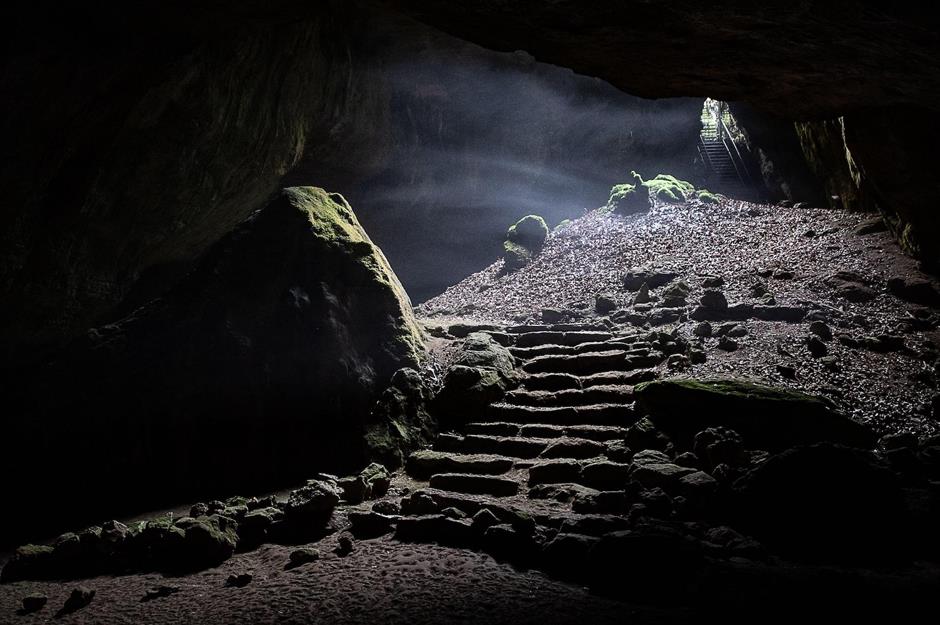
Further evidence that Neanderthals (Homo neanderthalensis) were capable of artistic or symbolic expression – once qualities attributed only to our own species, Homo sapiens – was uncovered in July 2021. The toe bone of a prehistoric deer, carved with geometric lines by Neanderthals 51,000 years ago, was discovered in Einhornhohle, or 'Unicorn Cave', in Germany's Harz Mountains (pictured).
It is one of the oldest works of art ever found. Also located near the carving were the shoulder blade bones of deer and the intact skull of a cave bear.
New species of dinosaur revealed, Chile
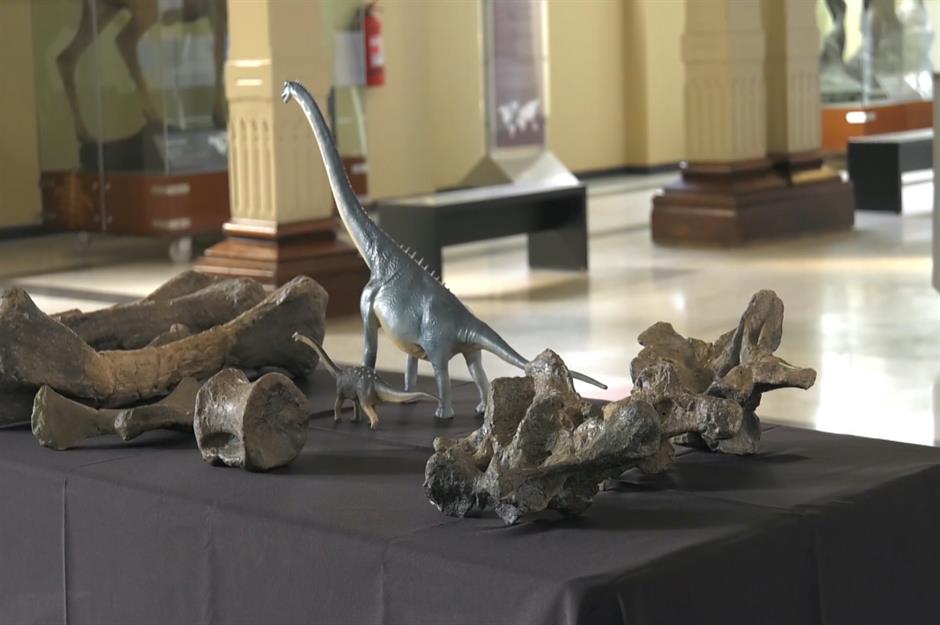
In April 2021, Chilean scientists revealed they had uncovered the remains of a new species of dinosaur. The actual finding was made in the 1990s in the Atacama Desert, but after decades of research, the team revealed the bones were from a previously unknown species of plant-eating titanosaur, which lived in the region during the Late Cretaceous epoch (between 101 and 66 million years ago).
The remains of the long-necked and long-tailed dinosaur are now on display at the Museum of Natural History in Santiago.
Rise of Aten, Egypt
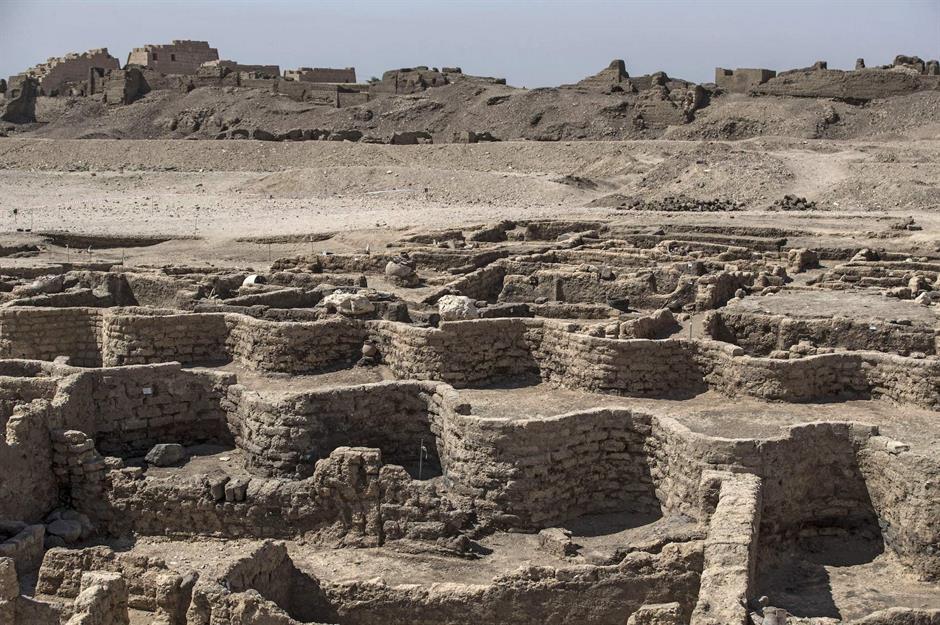
Perhaps the most significant archaeological discovery in Egypt in the past century, a 3,000-year-old city known as Rise of Aten was found beneath the sand near Luxor in April 2021. Described by Egyptologist Zahi Hawass as a 'lost golden city', it is the largest ancient settlement ever found in Egypt and it dates to the reign of Amenhotep III, who ruled in the 1300s BC.
The excavations uncovered well-preserved mud-brick structures including a bakery, and various residential and industrial districts. Unearthed artefacts include jewellery, pottery and mud bricks bearing Amenhotep III's seal, plus a vessel filled with what experts think was once boiled or dried meat.
Golden-tongued mummies, Egypt
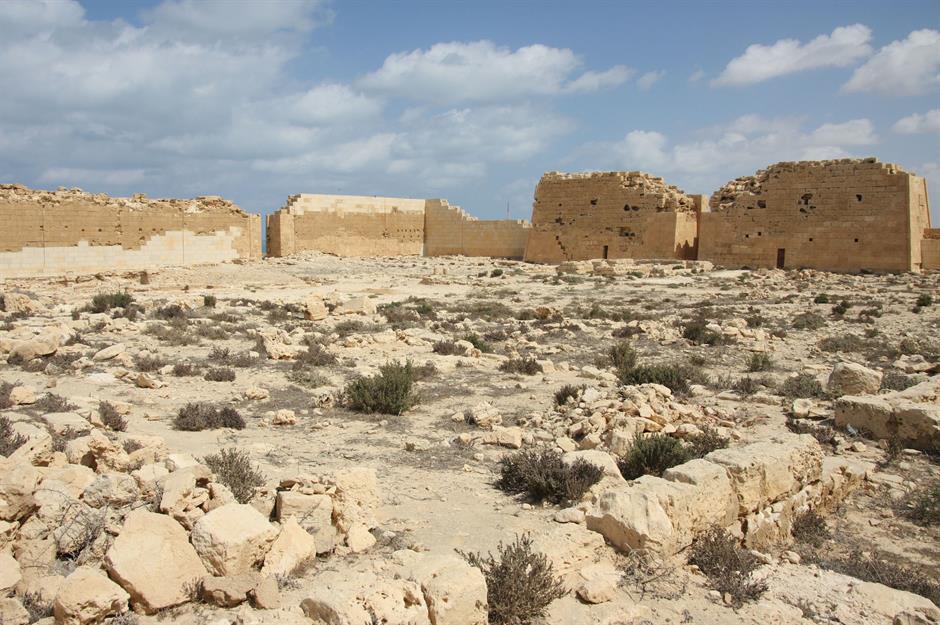
The stuff of treasure hunters’ dreams, archaeologists working at a burial site at the Taposiris Magna Temple (pictured) near Alexandria unearthed ancient mummies with golden tongues in February 2021. The 2,000-year-old mummies were found in 16 burial shafts dating from the Greek and Roman eras.
Amulets of gold foil, shaped in the form of a tongue, were apparently placed in the mouths of the dead to help them speak to the court of Osiris in the afterlife. A woman’s funeral mask was also found.
Sea dragon fossil, Rutland, England, UK
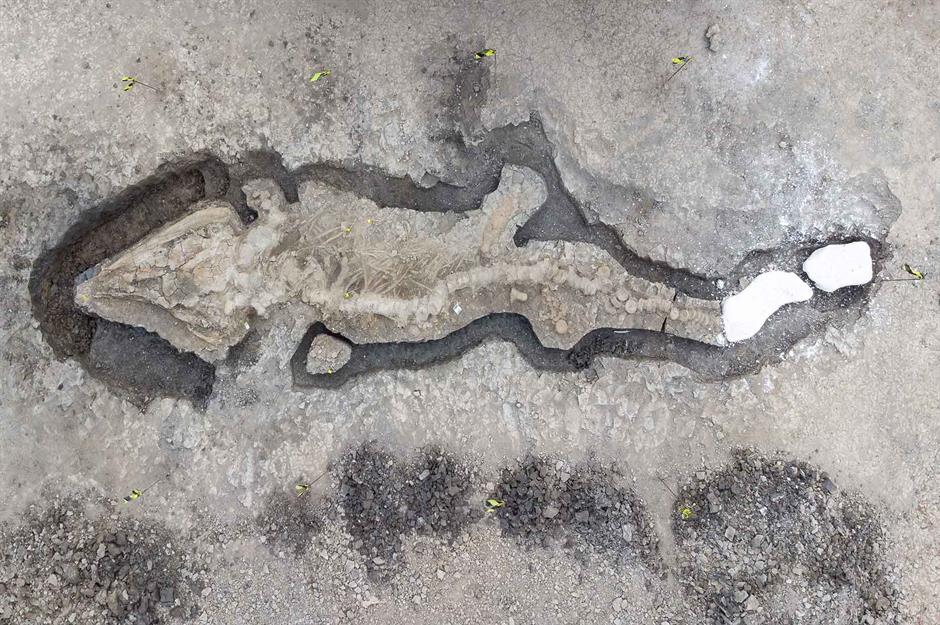
The fossilised remains of an ichthyosaur, also known as a sea dragon, were found in February 2021 during the routine draining of a lagoon in the English county of Rutland. The skeleton is huge and remarkably complete, and scientists believe it to be the first of its species, Temnodontosaurus trigonodon, ever discovered in the UK.
Further excavations revealed that the fossil measured 33 feet (10m) and likely dates back 180 million years. Staggeringly well-preserved, it's one of the UK's finest ever fossil finds.
Queen’s funerary temple, Saqqara, Egypt

A series of significant new discoveries were made at Saqqara, a vast ancient burial ground south of Cairo known for its stepped pyramid, in January 2021. Archaeologists unearthed the funerary temple of Queen Nearit, a previously unknown wife of King Teti, the first pharaoh of the sixth dynasty who ruled between 2323 BC and 2150 BC.
The queen was probably not buried in the temple – instead it would be a place that priests could visit to honour her and leave offerings.
Wooden coffins, Saqqara, Egypt
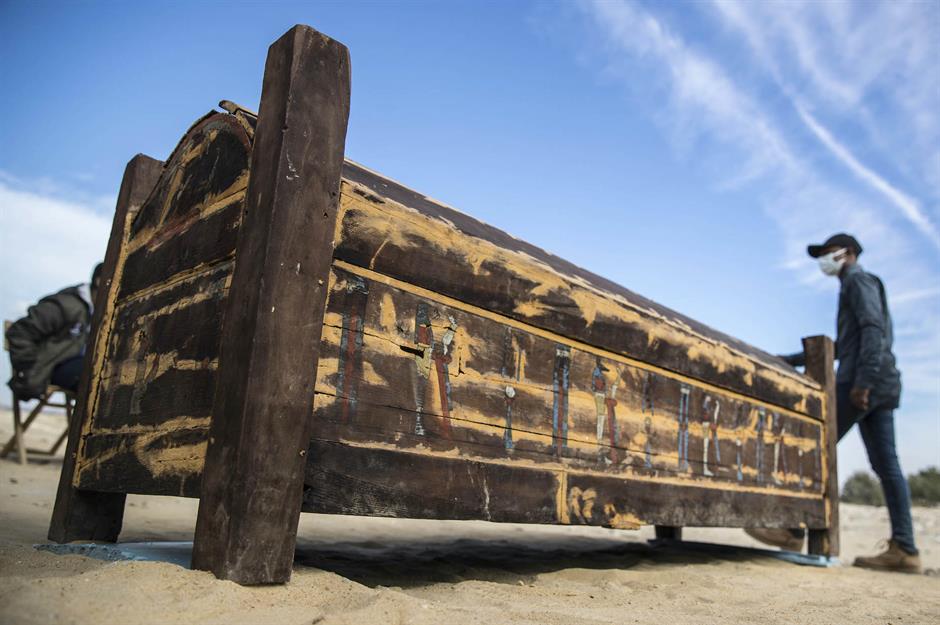
Part of the burial grounds for the ancient Egyptian capital of Memphis, Saqqara also yielded new burial shafts, coffins and mummies dating back to nearly 3,000 years ago. One of the most dazzling discoveries was a series of ornately painted wooden coffins, some containing mummies and adorned with artefacts including amulets, funeral statues and masks.
Pictured here is one of the coffins being revealed to the public in January 2021.
Dinosaur footprint, Wales, UK
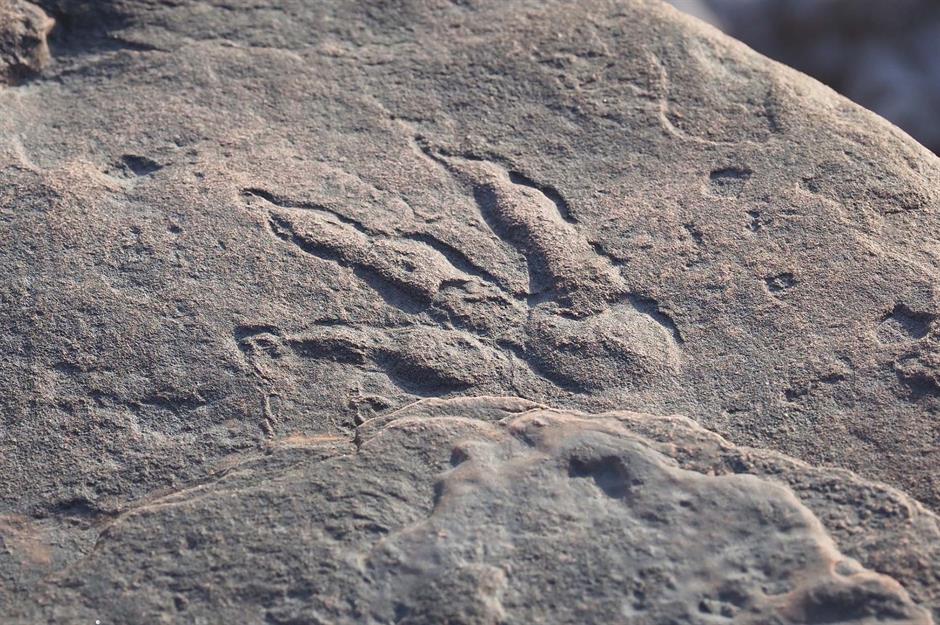
A seaside stroll turned into the discovery of a lifetime for one little girl in January 2021. While walking on Bendricks Bay near Barry in south Wales with her father, four-year-old Lily Wilder noticed an unusual imprint on a rock. They photographed it and sent it off to the experts.
Now identified as a 220-million-year-old footprint of an unidentified herbivorous dinosaur that had been preserved in mud, the fossil was extracted from the site and taken to National Museum Cardiff, where it is now on display.
Prehistoric necropolis, Spain
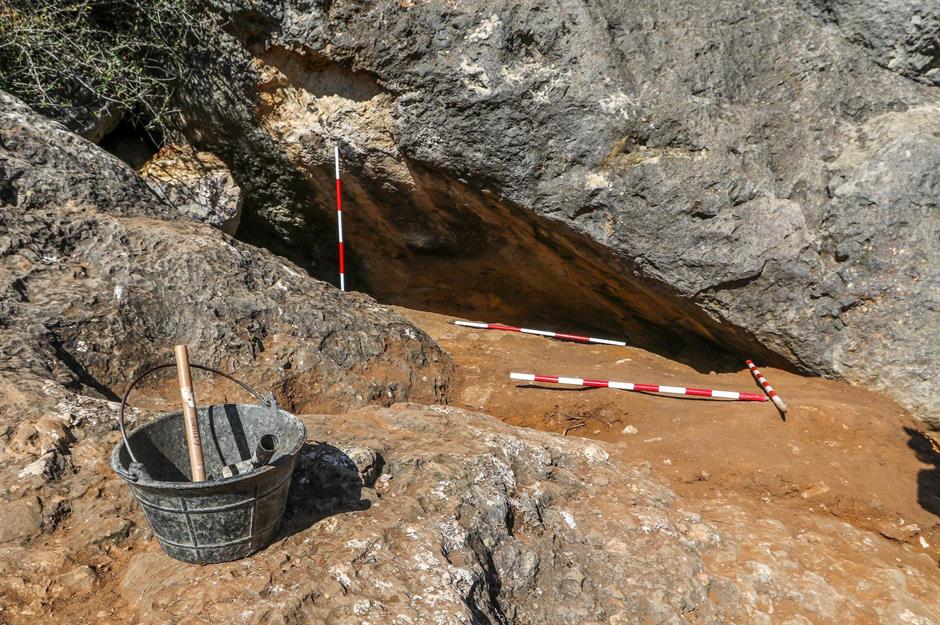
Set by the River Guadalmedina north of Malaga, the pueblo blanco (white town) of Casabermeja has a deep-rooted history. There's plenty of evidence of prehistoric settlement in the area, including cave paintings, and in 2021 scientists confirmed that human remains found by a member of the public were evidence of a 5,000-year-old necropolis.
The remains date from the period between the Neolithic and Chalcolithic ages, and so far excavations have revealed five burial sites within small caves, complete with funereal relics.
Now see the amazing worldwide wonders we've only just discovered
Comments
Be the first to comment
Do you want to comment on this article? You need to be signed in for this feature